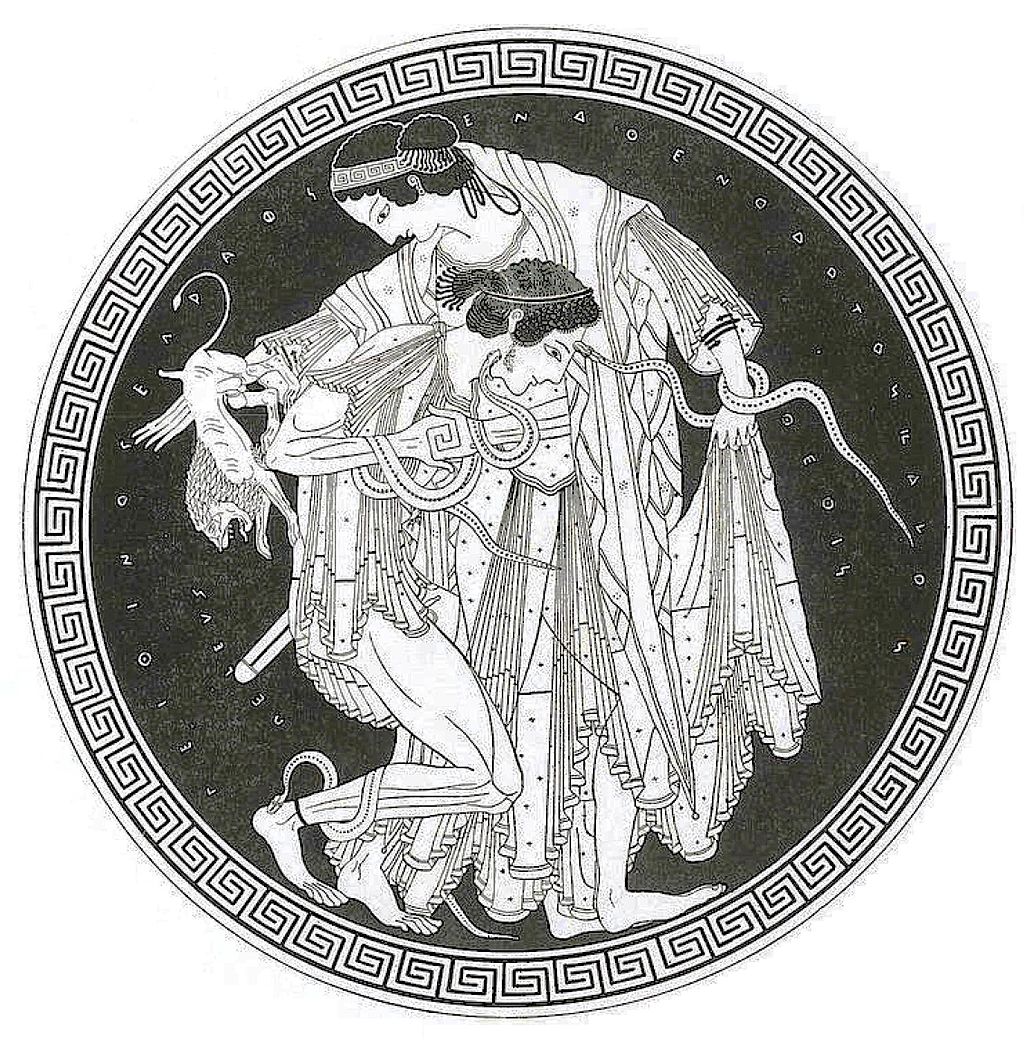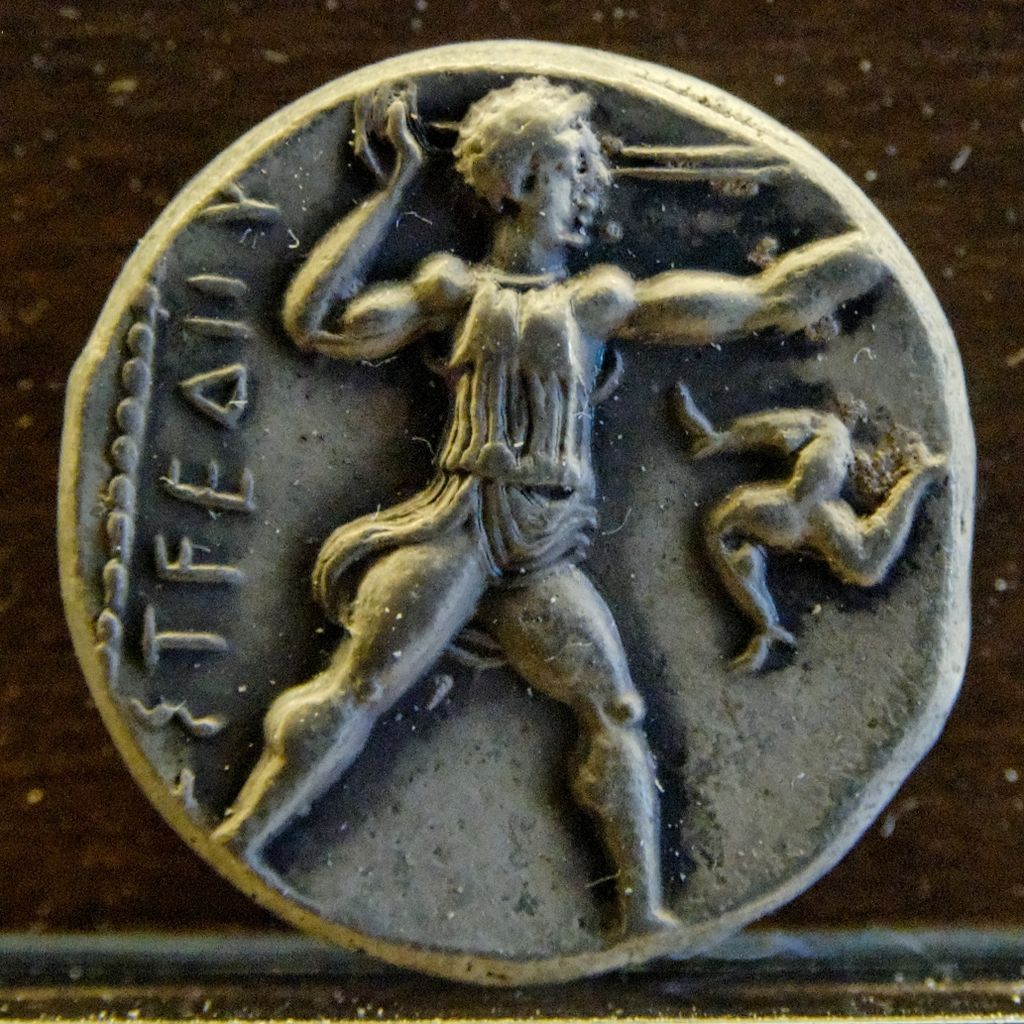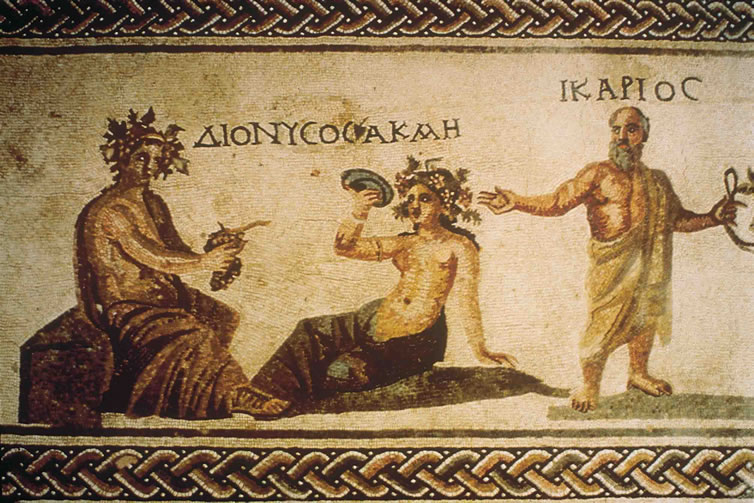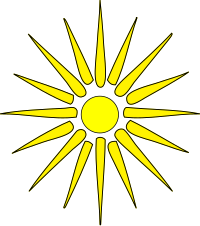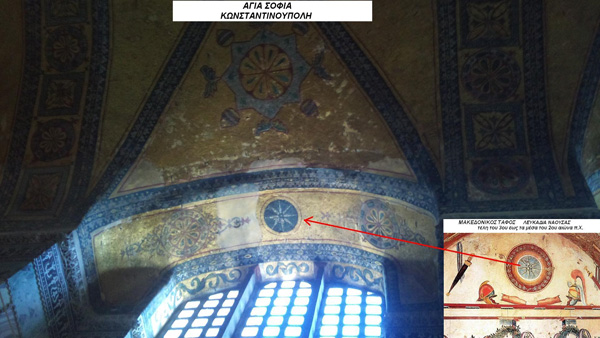Euphoriatric: SYMBOLS: Historical, Mythological & Cosmological Symbols
Symbols
Euphoriatric & Historical & Mythological-Cosmological Symbols
What is”Euphoriatric”?
The word is made up the prefix “ευ” meaning “well”, the verb “phoro” (“φορω” = I carry..i.e: metaphoric etc) and “iatric” (“ιατρικη”=medical)
The site is NOT Only about The Gastronomical Healthy Life but also the holistic way of living which includes the Following: Education, Culture, by Physical, Mental & Spiritual practices, as:(Gymnastics & Athletics), Philosophy, All Fine Arts(=:Sculpture, Architecture, Music, Poetry, Theater), Medicine, Physics, Astronomy, Mathematics, Etymology,(as a clue to analyze words & improve real historical facts),Literaure(=λογοτεχνία) and finally MYTHOLOGY, wich is COSMOLOGY, as well, contaning ALL the above , being One!!!!! So when parts of History, Mythology, Language etc, are stolen, copied, ortwisted …..THEN ..Anyone with the basic intelligence, can obviously see that in faked stolen Historical facts, there`s NOT anyRELATIONSHIP orCONTINUITY, What EVER are arguing by media, or pseudohistorians, “scholars” etc, due to strategical, economical, profits, inferiority complex etc!
Lectures, Beauty, inspiration Sourses & Traveling is the main line of our mission in combination with our sugested remendies, training (both external & inner exercises – reverse breathing, meditation etc). All this knowledge & Information is NOT for commercial purposes!

By exercising the Meander in Calisthenics and nutrition of Hippocrates, all young people today can make statuesque body and have excellent health.
Meander = Midwife of man – Μαίανδρος) – Maia(=Midwife)+andros (genetivus av aner=man). Μ = ΜΥΗΣΗ
Unknown(?) ancient Greek gymnastics
Nobody has so far not aware that the Meander, the
ancient Greek squared symbol painted everywhere is
Gymnastics.
The dictionaries give as the world … decorative vases,
buildings, clothing, etc. and nothing else.
And yet the Meander in some rare pots seems clear that
the race is handle the fight.
More than 3000 years that valuable information was lost.
The few pots with drawings explaining the gym is located
abroad (Germany, England, Italy, France, USA etc.).
No such vessel is in Greece!
At that time, however, was an open secret of the ancient
Greeks, for this and painted everywhere, but, strictly
codified.
Exercise strengthens the hands of this first disc, javelin, bow and sword, with the ultimate aim of handle the fight.
The bond between the fingers and clenching his opponent
was painful in the sport of wrestling and deadly war.
Plato himself was a wrestler, and of course aware of the
handle of the meanders.
Due to the loss of these vessels and the ignorance of the
usefulness of meander for thousands of years, we
changed the world body type, we lost power, weight and
got sick.
On the meander gym and nutrition of Hippocrates, all
young people today can build agalmatino body and have
excellent health.
Meandros or “Meander” – several centuries later –in English(Like: ΑΛΕΞΑΝΔΡΟΣ to … “Alexander”
Swastika just in Sanskrit means “That is well and is”. This symbol is Greek origin in ancient times referred to as “Double meander” or “Gammadion”. Not as swastika. Now theories k.Chitler for suns etc. I can not say because I need at least 1,000 pages to analyze. Used by Hittler when he visited a tribe of the Himalayas that had as its symbol the double meander and adopted as of them took in his words the same “Dreadful and strong knowledge.” Note that this tribe, although Buddhists consider today as spiritual fathers Greeks in particular Apollo (!)
The readers floor at the librery of Messini the Metropole of the later Cicilian Messini, by Spartans (Spata is the capital of Laconia – neighibour to Messini city of Messinia county)
Parts of the Phillip ivory shield that found in Vergina Tomb. You can see clearly the two Pan-Hellenic symbols: The 16th Sun/Star (Vergina Sun) and the Meander (Greek key). The shield itself can be found in the museum of Vergina in Central Macedonia, Greece.Greek Sun/Star or Vergina Sun/StarThere are many other symbols which use the rayed star (the ancient Greek symbol) across the centuries. The ancient Greek stars can contain 3-rays up to 24-rays, and all rays have many shapes, according to their inner meaning found in archaeological monuments. Many ancient archaeological findings exist today, such as ancient Greek coins, texts, icons, emblems, tituli, ostraca, fragments, epigrammata, papyrorum, tablettes, recensios, sculpures, vases, monuments etc. which make use of the ancient Greek rayed star symbol. 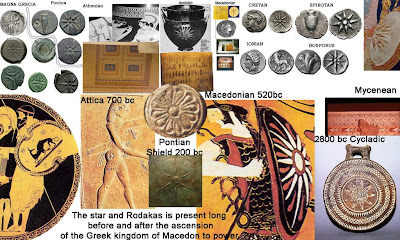
VERGINA THE ULTIMATE PANHELLENIC SYMBOL OF THE SUN (APOLLO)
Even Achilles (Alexander the great Idol) has the rayed star on his armory – as well as many of the ancient Greek gods and goddesses.
Achilles (was thousant years later the idol ofAlexander the Great) and Ajax (was nephew ofPriamos! Asioni – his mother was Priamos sister); playing dice, 6th cent, BC amphoraThe symbol is the continuation of the oldest ancient Greek(Panhellenic) symbol of the Sun, which also predominated on the Acropolis of Athens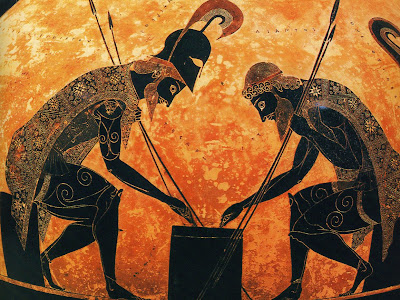
Acropolis ceiling
. 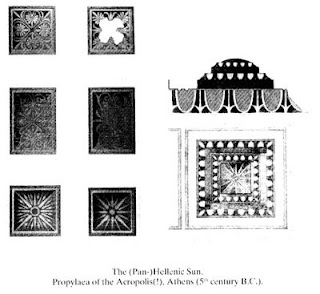
Inside the outer wall of columns of the Parthenon in Nashville, Tennessee. This «Parthenon» is a full-scale replica of the original Parthenon in Athens. It was built in 1897 as part of the Tennessee Centennial Exposition.The Sun was also the most important symbol of the origin and continuation of all Hellenes:Arcadians, Athenians, Thessalians, Macedonians – their first God, before the Olympian Gods. The choice of this symbol was obvious and natural: one of the most vital elements on earth is the Sun – the source of life.Many people call it “the Sun of Vergina” or the “Macedonian Star” but this is only a partial truth. This symbol has a history of more than three thousand years. It was the original logo or sign which the Proto-Hellenes used as their emblem for many centuries. The Macedonians simply continued the ancient Proto-Hellenic (Homeric) heritage or tradition of their forefathers. From the late 17th century AD, and in particular the 18th century, classical Greek civilization began to attract the ever-growing interest, curiosity and imagination of western Europeans. One manifestation of this was the numerous “journeys of discovery” undertaken by various scholars to the soil of “rediscovered Hellas” itself, which was then still part of the Ottoman Empire. Two such individuals were the young architects James Stuart and Nicholas Revett, who in 1751 arrived in Attica and immediately set about accurately recording the architectural details of surviving buildings of classical Athens and its surroundings.The most known Rayed Star is the ancient Greek Macedonian symbol of Vergina. The “Vergina Sun”, “Star of Vergina” or “Argead Star” is the name given to a symbol of a stylised star or sun with sixteen rays. It was unearthed in 1977 during archaeological excavations in Vergina, in the northern Greek province of Macedonia. 

The vergina star was found in the tombs of the kings of the ancient kingdom of Macedon, and was described as the symbol variously as a “star”, a “starburst” or as a “sunburst”. The well known larnax on which it appears belonged to Greek King Philip II of Macedon, the father of the Greek Alexander the Great III. The larnax is on display at the archaeological museum in Vergina. Another version of the Vergina Sun, with 12 rays, was found on the larnax of Olympias, the mother of Alexander the Great. Only the Greeks can really understand the inner, esoteric, hidden ancient meaning of the vergina symbol and, in this movie a hint of it is presented. The Macedonian Tomb of Lyson and Kallikles at Leucadia. The tomb is dated to ca. 200 B.C. The tomb was accidentally discovered in 1942 at Leucadia Emathias and subsequently excavated by Ch. Macaronas. The results of the investigation were published in a book by his collaborator, Stella Miller, in 1993.
There is a surviving fragmentary Macedonian shield with a twelve-ray star in the centre and elements of an arch-shaped ornament and eight-ray stars around the edge ; a similarly designed silver circular applique with an eight-ray star in the middle and seven arch-shaped elements around the edge was found in tomb A at Derveni.Meander or Greek Key A Greek key pattern or meander, symbolizing the flow of a river, often is found in stylized form as a border decoration on rugs, ceramics, and walls. A meander is similar to the Chinese sign for “returning,” thus it is also a symbol of rebirth and eternity.

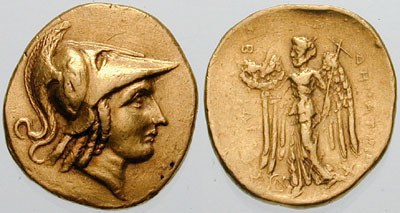
Ἀλέξανδρος ὁ Μέγας, Aléxandros ho Mégas – Greek: [a.lék.san.dros ho mé.gas] ), was a king (basileus) of theAncient Greek kingdom of Macedon(=High land) and a member of the Argead dynasty. Born in Pella in 356 BC, Alexander succeeded his father, Philip II, to the throne at the age of twenty. He spent most of his ruling years on an unprecedented military campaign through Asia and northeast Africa, and by the age of thirty he had created one of the largest empires of the ancient world, stretching from Greece to northwesternIndia. He was undefeated in battle and is widely considered one of history’s most successful military commanders.
During his youth, Alexander was tutored by the philosopher Aristotle until the age of 16. After Philip’s assassination in 336 BC, Alexander succeeded his father to the throne and inherited a strong kingdom and an experienced army. Alexander was awarded the generalship of Greece and used this authority to launch his father’s Panhellenic project to lead the Greeks in the conquest of Persia.In 334 BC, he invaded theAchaemenid Empire, and began a series of campaigns that lasted ten years. Following the conquest ofAsia Minor, Alexander broke the power of Persia in a series of decisive battles, most notably the battles of Issus and Gaugamela. He subsequently overthrew the Persian KingDarius III and conquered the Achaemenid Empire in its entirety. At that point, his empire stretched from the Adriatic Sea to the Indus River.
Seeking to reach the “ends of the world and the Great Outer Sea”, he invaded India in 326 BC, but eventually turned back at the demand of his homesick troops. Alexander died inBabylon in 323 BC, the city he planned to establish as his capital, without executing a series of planned campaigns that would have begun with an invasion ofArabia. In the years following his death, a series of civil wars tore his empire apart, resulting in several states ruled by the Diadochi, Alexander’s surviving generals and heirs.
Alexander’s legacy includes the cultural diffusion his conquests engendered, such as Greco-Buddhism. He founded some twenty cities that bore his name, most notablyAlexandria in Egypt. Alexander’s settlement of Greek colonists and the resulting spread of Greek culture in the east resulted in a new Hellenistic civilization, aspects of which were still evident in the traditions of the Byzantine Empire in the mid-15th century and the presence of Greek speakers in central and far eastern Anatolia until the 1920s. Alexander became legendary as a classical hero in the mold of Achilles, and he features prominently in the history and mythic traditions of both Greek and non-Greek cultures. He became the measure against which military leaders compared themselves, andmilitary academies throughout the world still teach his tactics. He is often ranked among the most influential people in human history, along with his teacher Aristotle.
This plundered cist tomb, built of limestone and situated at the edge of the Great Tumulus next to the “Ηρώον”-‘heroon'(=”Heroes Garden”, was named Tomb of Persephone because of its painted ornamentation. Prominent among figures of the Fates (Μοιραι) and of Demeter(Δήμητρα) seated on the “mirthless rock” is a depiction of the abduction of Persephone by the god of the underworld, Pluto.
The artistry of execution, strength of conception and restraint of colouring all denote an artist of great talent (perhaps Nikomachos = Battle winner from: Niki+Machi..ex: Andromacheof Troja) of the mid-4th century BC; this dating is supported by the sherds of pottery found in the interior of the tomb.
| Alexander the Great | |||||
|---|---|---|---|---|---|
| Basileus of Macedon, Hegemon of the Hellenic League,Shahanshah of Persia, PharaohofEgypt, Lord of Asia | |||||
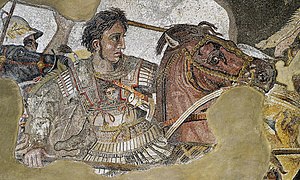
“Alexander fighting king Darius III of Persia“, Alexander Mosaic,Naples National Archaeological Museum. |
|||||
| King of Macedonia | |||||
| Reign | 336–323 BC | ||||
| Predecessor | Philip II | ||||
| Successor | Alexander IV Philip III |
||||
| Pharaoh of Egypt | |||||
| Reign | 332–323 BC | ||||
| Predecessor | Darius III | ||||
| Successor | Alexander IV Philip III |
||||
| King of Persia | |||||
| Reign | 330–323 BC | ||||
| Predecessor | Darius III | ||||
| Successor | Alexander IV Philip III |
||||
| King of Asia | |||||
| Reign | 331–323 BC | ||||
| Predecessor | New office | ||||
| Successor | Alexander IV Philip III |
||||
| Born | 20 or 21 July 356 BC Pella, Macedon |
||||
| Died | 10 or 11 June 323 BC (aged 32) Babylon |
||||
| Spouse | Roxana of Bactria Stateira II of Persia Parysatis II of Persia |
||||
| Issue | Alexander IV | ||||
|
|||||
| Greek |
|
||||
| Dynasty | Argead | ||||
| Father | Philip II of Macedon | ||||
| Mother | Olympias of Epirus | ||||
| Religion | Greek polytheism | ||||
(=protector from men – andros: genetivus of Ανηρ- ) ,
ΛΕΑΝΔΡΟΣ(=Lion to man)to…“Leander”,…..
ΑΝΑΞΙΜΑΝΔΡΟΣ  to …“Anaximander”. – (610 – c. 546 BC), was a pre-SocraticGreek philosopher and astronomer, who lived inMiletus,a city of Ionia (in modern-day Turkey). He belonged to the Milesian school and learned the teachings of his masterThales. ….ΠΕΡΙΑΝΔΡΟΣ (From: preposition: Peri+andros = about the man) – to …“Periander”– (/ˌpɛriˈændər/; Greek: Περίανδρος; died c. 587 BC), was the Second Tyrant of the Cypselid dynasty that ruled overCorinth. Periander’s rule brought about a prosperous time in Corinth’s history, as his administrative skill made Corinth one of the wealthiestcity states in Greece.
to …“Anaximander”. – (610 – c. 546 BC), was a pre-SocraticGreek philosopher and astronomer, who lived inMiletus,a city of Ionia (in modern-day Turkey). He belonged to the Milesian school and learned the teachings of his masterThales. ….ΠΕΡΙΑΝΔΡΟΣ (From: preposition: Peri+andros = about the man) – to …“Periander”– (/ˌpɛriˈændər/; Greek: Περίανδρος; died c. 587 BC), was the Second Tyrant of the Cypselid dynasty that ruled overCorinth. Periander’s rule brought about a prosperous time in Corinth’s history, as his administrative skill made Corinth one of the wealthiestcity states in Greece. Several accounts state that Periander was a cruel and harsh ruler, but others claim that he was a fair and just king who worked to ensure that the distribution of wealth in Corinth was more or less even., ……ΝΙΚΑΝΔΡΟΣto “Nikander”
Several accounts state that Periander was a cruel and harsh ruler, but others claim that he was a fair and just king who worked to ensure that the distribution of wealth in Corinth was more or less even., ……ΝΙΚΑΝΔΡΟΣto “Nikander”
(= mans victory – from: NIKE=victory + andros) 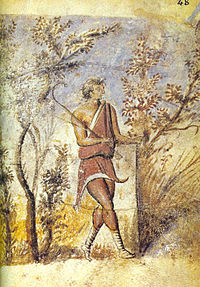
Nicander of Colophon (Greek: Νίκανδρος ὁ Κολοφώνιος Níkandros ho Kolophṓnios; fl. 2nd century BC), Greek poet, physician and grammarian, was born at Claros (Ahmetbeyli in modern Turkey), nearColophon, where his family held the hereditary priesthood ofApollo. He flourished underAttalus III of Pergamum.
He wrote a number of works both in prose and verse, of which two survive complete. The longest,Theriaca, is a hexameter poem (958 lines) on the nature of venomous animals and the wounds which they inflict. The other,Alexipharmaca, consists of 630 hexameters treating of poisons and theirantidotes. Nicander’s main source for medical information was the physician Apollodorus of Egypt. Among his lost works, Heteroeumena was a mythological epic, used by Ovid in the Metamorphoses and epitomized byAntoninus Liberalis; Georgica, of which considerable fragments survive, was perhaps imitated by Virgil.
The works of Nicander were praised by Cicero (De oratore, i. 16), imitated byOvid and Lucan, and frequently quoted by Pliny and other writers (e. g.Tertullian in De Scorpiace, I,
NIKE (=VICTORY) of SAMOTHRACE
circa 220-185 BC Samothrace Parian marble for the statue and gray Rhodian marble for

From the multitude of ancient “angeiografiakon” representations reflect clearly that this handle, the handle of cheironios or cheironio grid or whatever was called this particular handle in the past, was the special maybe solemn emblem theomachon Greek heroes! The grand schematic slogan that the gods are defeated!
The Meander So was probably the graph of divine defeat of spunky theomachous heroes!
The Meander is motto Heroes Veterans. Priests wear on their clothes, Warriors in his left arm.
The Meander is Chiron handle CHEIRONIO GRID, the bond of Alexander the Great (son of Zeus), according to legend, with the comrades and citizens of all the earth.
It is the ancient symbol tribal Indians, Celts, Indians, Caucasians, Norwegian Sheet, Slavs, Hindus, Buddhists, Egyptians.
It is the ceaseless energy emanating from the human to the divine element. But from the coil to man, ELIX, for the advancement Spiritual and Transcendental.
The bond that unites people elevating the spirit, and mind, heart and multiplies the vigor and strength, and can defeat even the gods.
“Symbol of balance and imbalance.” Treasury and different moments and forces. The good and evil in essence is “In”. Yin-yang. Meander is the sacret Symbol of Zeus. Eagle and Victory and Athena, and Artemis.The Omnipotence of Greek when it is united.
Human Initiation into the mysteries of life; Zeus
It consists of 9 letters. 9 cycles of life; KEYS – Lessons by Pythagoras, bring elements of Anthemios, and the Delphic E.
M = INITIATION
A = PERPETUAL
I = POWER,
A = VIRTUOUNESS
N = INTELECT
D = POWER
R = FLOW,
O = HEAVENLY
S = WISDOM
With Meander Peleus, a commoner defets the goddess Thetis. Hercules defets Triton. Heroism expressed through the Meander. The initiator Centaur Chiron, teacher great heroes.
The Meander is the flame of victory. It is strategic and price Welcome, Struggle and sacrifice, Virtue and Wisdom.
The expert of the meander, the initiate soldier, joining forces as a chain, creates strong bonds recognizes the enemy, studying him carefully,
and tightens with the steel hand, activating the matter, intellect, soul, and spirit.
Everything can be defeated using the same opponent strength.
The Meander is picture but IDEA. The power that motivates, strengthens, harmonizes, coordinates and returns back to the source from which it came.
This also is the person comes from a Union Inter-ferent forces, and returns to its original universal
Meander, the handle of theomachon – ΘΕΟΜΑΧΩΝ (theo = God + machon = wariors (from μαχη- machi = battle. ex: Andromachi = the battle of man, by meaning she can fight like a man!( Andromachi wasone of the daughters of Priamos in ancient Ilion or Troja). the name Troja örigins from Troades speeaking Ionian dialect, similar to the Attica county of Athens)
Once the moon’s light the king of Fthia Peleus. panoria saw a goddess dancing with the daughters of waters. It was the goddess Thetis, the prophecy of Prometheus forced to marry the mortal, so as not born one who would overturn the almighty Zeus!
This magnificent theme brilliantly depicted inside red-cup at the beginning of 500 BC made by Pithinos, now in the museum of West Berlin. The excellent display that shows Peleus, defying snakes divine transformation that the bite everywhere, and the lion oryetai hooked on his back. Peleus overcomes the transformations of Beauty goddess, using the sacred “cheironio handle” or “meander” as later became known, the famous ancient symbol of the defeat of the gods!
The outside wiew of the above Cylix
Image: Hercules pays Triton with “Maiandrios handle.“
Angiography in 550 BC Archaeological Museum Tarkynia.

Dictionaries indeed insist on VERY stupid stereotypical view, that meander is “the ancient decorative shape that reminds maneuver the river meanders Caria where was first discovered and from which it took its name.”!!! It may indeed be named from the river near which protoefrethi but is utterly foolish to believe that throughout the world ellinoprepi These findings reflect passionately graces and “maneuvers” of an unknown to a large river Asian Caria.
We note here that the correlation of that handle, or a handful hooked mes “on the other, clearly forms the famous ellinoprepes linear symbol fret, here are evident. I do not see anywhere but commenting so, this evident parallelism, which both honors’ world famous Greek meander “, which is simply known only as a beautiful decorative linear invented and not as a potential holy symbol riser man on the podium of equal opponent the “gods”. The Maiandrios pair of hands is excellent symbolism every heroism and axiosynis.MEANDROS_PILEAS-THETIDA Eikona: Peleus pay Thetis with “Maiandrios link hands or cheironio handle”! Red-figure kylix Interior dated around 500 BC D. Berlin Museum.
From the multitude of ancient angeiografiakon representations reflect clearly that this handle, the handle or cheironios cheironio grid or whatever you called this particular handle in the past, was the special maybe solemn emblem theomachon Greek heroes! The grand schematic slogan that the gods are defeated!
The Meander So was probably the graph of divine defeat of spunky theomachous heroes!
MEANDER2-HERKELES-Picture: Hercules pays Triton with “Maiandrios handle.”
Angiography in 550 BC Archaeological Museum Tarkynia.
The “Maiandrios handle” as rightly must now call it, uses repeatedly the foremost theomachos Hercules, as seen highlighted clearly in this masterly portrayal of Hercules wrestling with Triton, angiography of 550 eg . where we see Triton strive in vain to open in front of his chest, locked with Maiandrios handle steely fingers invincible hero!
The obvious relation decorative meander and meander handle can also easily found by Peleus and Thetis complex [5] where the value of said handle in the center of the show overemphasized wreathed around from the most stylized Maiandrios symbolism. There should also be no coincidence that angiograms crowd implying divine defeat, or unreasonable heroism, often topped by fret!
Maiandros-FILIPPOU we come to the conclusion, that it is no accident the wide dissemination in antiquity of these meanders symbolism. It was a timeless gift of mythological times, the classic and modern times Mediterranean descendants of Greek. A lovely schematic slogan, the obligation to retreat of power “gods”, the priesthood and religions.
Meander from chryselephantine(=Gold-Elephant) shield of gilded armor of Philip II which was found in the royal tomb of Vergina!
Indeed, if we assume that the right questions and interpretations, are the two hands of the wise. Then Maiandrios essence, is none other than the unbroken chain of questions and interpretations that render inoperable deified riddles!

You as a people (this applies only to the current Greek) to suffer (because some so want) heavy historical amnesia, but there is no reason to remove stubborn value than the symbolism of our ancestors, insisting passionately on upstart some interpretations very lightly suggested underestimating him brutally exquisite sacred symbolism.
The meander is a linear ordering of the Greek ancestors, for battle against the impossible! A wonderful schematic reminder that in your two “hands” keep the secret of the defeat of your oppressor. If only your own “hands” are not sufficient, then join with others in an inseparable harmonious whole, ellinoprepous, militant, meander chain, aggressive questions and apomoithopoiitikon interpretations! This is the most effective battle against arbitrary power!
The sacred meander is an eternal symbol of victory that gives the Greek antiquity the universal hope of ultimate release from the bondage of every single ancient and contemporary “gods”.
So, like Hermes, reconciles these forces, and balancing the distribution of energy in the body occurs and healing, the mind admonishes and guides his passions.
Hercules, from infancy he managed to drown two snakes, that put under its control, to tame and dominate the forces that make us vulnerable and vulnerable, and became a demigod hero went to the Champs Elysees ( “Ylisia pedia”Ηλυσια πεδια). Through this myth of Hercules, let it also leaked and that, as Pais of Zeus, the possession of a power of the heavenly, not only dominate through the mind and intellectual contact with the Divine earthly, bodily instincts, but and implied a mission given to him against the Offit Atlanteans, those we call Satan today.
www.euphoriatric,com/

THE CROSS
&
The crucified ORPHEUS,
REPRESENTATION ELLINISTIc TIME, depicts the secret and philosophical ORPHEUS ON THE CROSS, THE SEVEN surrounded STARS (ASTRA). The CROSS WAS ancient GREEK SYMBOL, showing CONVINCED OF OUR ancestors FOR IMMORTALITY OF THE SOUL.
It has been found in jewelry priest, but in mirror AS THE FEATURE figurine FROM Khirokitia OF CYPRUS, related to 6.OOO ABOUT BC, GIVING THE PICTURE cruciform IN HUMAN FORM SHALL ISOSKELOUS CROSS PENDANT ALSO …
The ISOSKELIS GREEK CROSS, THAN ALL, representing the union Ouranio OF THE AUTHORITY chthonic, the descent of spiritual elements THE TITANIC AND THE COUPLING OF ARRENAS KOSMIC AUTHORITY TO nipples SUBSTANCE FOR MAKING KOSMIC CREATION …
triskelion or triskele 
…(which invariably has rotational symmetry) is amotifconsisting of three interlocked spirals, three bent human legs, or three bent/curved lines extending from the center of the symbol. Both words are fromGreek“τρισκέλιον” (triskelion) or“τρισκελής”(triskeles), “three-legged”, from prefix “τρι-” (tri-), “three times” + “σκέλος” (skelos), “leg”. A triskelion is the symbol of Sicily, where it is called trinacria,as well as of the Isle of Man,Brittany, and the town ofFüssen in Germany.
VIEWING THESE AND MANY OTHER ITEMS ARE INTEGRATED INTO THE RITUAL OF THE CHURCH AND IN TRADITIONS OF inevitably AFTER THE ANCIENT SOUL STILL IN OUR LIVES, unintentionally HIDDEN AS the Sant. AVGOUSTIN had declared that TRUE KNOWLEDGE WAS ALWAYS IN ANCIENT GREEKS, until the CHRISTIANITY came AND dubbed “CHRISTIAN” perpetual tradition existed, CHANGING THE JACKET …

ALL Greek words ending in ANDROS turn into -ANDER in latin: Like: Alexandros, Meandros, Leandros, Anaximandros etc. names in -OS ; Latinized ending in: US..Ex: Oedipus-Οιδίπους=edema+foot(οιδημα+πους, – Gen: ποδος), Asclipios-Asclepius, Archilaos-us etc..
https://www.facebook.com/AncientGreekCivilizationArchaiaEllas/photos/a.744739952227261.1073741837.478528392181753/771154892919100/?type=1&theater
REFERENCES:
1 «CHIRON: WHO FIRST BROAD MEDICINE WITH HERBS» SUDA CHI. 267.
2 PINDARUM NEMEA. 4.60 // SCHOL. IN PINDARUM NEMEA. 3.60.
3 OR KYLIX KYLIX: GLASS OR WINEGLASS.
4 CARIA: ASIA MINOR. ANCIENT COUNTRY. WAS LOCATED ACROSS THE RHODES SAMOS ISLAND.
5 GREEK MYTHOLOGY KAKRIDI ATHENS PUBLISHING 3RD VOL. PP. 141.
6 HOMERUS ODYSSEA 4. 355-500.
FROM HIS BOOK M. KALOPOULOS “THE BIG LIE” 1995 PAGES: 219-222
HTTP://WWW.CYBUSINESSGUIDE.COM/UPLOAD/MAIANDROS_MIXALIS_KALOPOULOS.PDF
STRANGEHELLAS.BLOGSPOT.COM
HTTP://WWW.SCHIZAS.COM
HTTP://WWW.ZOUGLA.GR
READ MORE AT HTTP://WWW.GREATLIE.COM
The first step to destroy a nation is to delete the memory.
…….Destroy his books, its culture, twisting its history…….after you put someone to write new books, manufacture a new culture, invent a new story …it will not need much time to start this nation forgetting what is and what was. The world around him will forget even faster.
Milan Kundera (The book of laughter and forgetting)
MOST POPULAR

A Mycenaean Greek reference was found on two Linear B clay tablets at Pylos[6] to a deity or semi-deity called ti-ri-se-ro-e (Linear B:; Tris Hḗrōs, “thrice or triple hero”) and could be connected to the later epithet “thrice great”, Trismegistos, applied to Hermes/Thoth. On the aforementioned PY Tn 316 tablet, as well as other Linear B tablets found in Pylos, Knossos and Thebes, there appears the name of the deity “Hermes” as e-ma-ha (Linear B: ), but not in any apparent connection with the “Trisheros”. This interpretation can not be disputed. Homer refers to Hermes as the god that led the souls of the dead to the underworld and in many cases he was present in the court of the underworld where Hades reigned. All these customs were transfered to Egypt by the Minoans and the Myceneans later on in the 14th c. B.C.The majority of Greeks, and later Romans, did not accept Hermes Trismegistus in the place of Hermes.[citation needed] The two gods remained distinct from one another. Cicero noted several individuals referred to as “Hermes”: “the fifth, who is worshiped by the people of Pheneus [in Arcadia], is said to have killed Argus, and for this reason to have fled to Egypt, and to have given the Egyptians their laws and alphabet: he it is whom the Egyptians call Theyt.” In the same place, Cicero mentions a “fourth Mercury (Hermes) was the son of the Nile, whose name may not be spoken by the Egyptians.” The most likely interpretation of this passage is as two variants on the same syncretism of Greek Hermes and Egyptian Thoth (or sometimes other gods); the one viewed from the Greek-Arcadian perspective (the fifth, who went from Greece to Egypt), the other viewed from the Egyptian perspective (the fourth, where Hermes turns out “actually” to have been a “son of the Nile,” i.e. a native god). Both these very good early references in Cicero (most ancient Trismegistus material is from early centuries AD) corroborate the view that Thrice-Great Hermes originated in Hellenistic Egypt through syncretism with Egyptian gods (the Hermetica refer most often to Thoth and Amun).The Hermetic literature among the Egyptians is concerned with conjuring spirits and animating statues that inform the oldest texts, Hellenistic writings of Greco-Babylonian astrology and the newly developed practice of alchemy (Fowden 1993: pp65–68). In a parallel tradition, Hermetic philosophy rationalized and systematized religious cult practices and offered the adept a method of personal ascension from the constraints of physical being, which has led to confusion of Hermeticism with Gnosticism, which was developing contemporaneously.
As a divine source of wisdom, Hermes Trismegistus was credited with tens of thousands of writings of high standing, reputed to be of immense antiquity. Plato’s Timaeus and Critias state that in the temple of Neith at Sais, there were secret halls containing historical records which had been kept for 9,000 years. Clement of Alexandria was under the impression that the Egyptians had forty-two sacred writings by Hermes, encapsulating all the training of Egyptian priests. Siegfried Morenz has suggested (Egyptian Religion) “The reference to Thoth’s authorship… is based on ancient tradition; the figure forty-two probably stems from the number of Egyptian nomes, and thus conveys the notion of completeness.” The Neo-Platonic writers took up Clement’s “forty-two essential texts”.
The Hermetica is a category of papyri containing spells and initiatory induction procedures. In the dialogue called the Asclepius (after the Greek god of healing), the art of imprisoning the souls of demons or of angels in statues with the help of herbs, gems and odors, is described, such that the statue could speak and engage in prophecy. In other papyri, there are recipes for constructing such images and animating them, such as when images are to be fashioned hollow so as to enclose a magic name inscribed on gold leaf.
Fowden asserts that the first datable occurrences of the name were in the Legatio of Athenagoras of Athens and a fragment from Philo of Byblos, circa AD 64–141. However, in a later work, Copenhaver reports that this name is first found in the minutes of a meeting of the council of the Ibis cult, held in 172 BC near Memphis in Egypt. Hart explains that the name is derived from an epithet of Thoth found at the Temple of Esna, “Thoth the great, the great, the great.” The date of his sojourn in Egypt during his last incarnation is not now known, but it has been fixed at the early days of the oldest dynasties of Egypt, long before the days of Moses. Some authorities regard him as a contemporary of Abraham, and some Jewish traditions claim that Abraham acquired a portion of his mystical knowledge from Hermes himself (Kybalion).
Many Christian writers, including Lactantius, Augustine, Giordano Bruno, Marsilio Ficino, Campanella and Giovanni Pico della Mirandola, considered Hermes Trismegistus to be a wise pagan prophet who foresaw the coming of Christianity.They believed in a prisca theologia, the doctrine that a single, true theology exists, which threads through all religions. It was given by God to man in antiquity and passed through a series of prophets, which included Zoroaster and Plato. In order to demonstrate the verity of the prisca theologia, Christians appropriated the Hermetic teachings for their own purposes. By this account, Hermes Trismegistus was either, according to the fathers of the Christian church, a contemporary of Moses or the third in a line of men named Hermes, i.e. Enoch, Noah and the Egyptian priest king who is known to us as Hermes Trismegistus,or “thrice great” on account of being the greatest priest, philosopher and king.
This last account of how Hermes Trismegistus received the appellation “Trismegistus,” meaning “Thrice Great,” is derived from statements in the The Emerald Tablet of Hermes Trismegistus, that he knows the three parts of the wisdom of the whole universe. The three parts of the wisdom are alchemy, astrology, and theurgy. The Pymander, from which Marsilio Ficino formed his opinion, states that “they called him Trismegistus because he was the greatest philosopher and the greatest priest and the greatest king”.
Another explanation, in the Suda (10th century), is that “He was called Trismegistus on account of his praise of the trinity, saying there is one divine nature in the trinity.”
Hades abducting Persephone, a mural from the Macedonian royal tomb at Vergina, mid 4th century BC

DOUBLE CROSS MAIANDROS- AGKYLOTOS -SVASTIKA
The swastika is an extremely powerful symbol. It can be widely known by the Nazis, who used it as a symbol of the period that massacred thousands of people, but centuries ago had a positive significance. So what is the history of this symbol? Nowadays represents good or bad?
The swastika is an ancient symbol that was used for over 3000 years. . Builders such as pottery and coins from ancient Troy (Ionian Greek civilization), show that the swastika was a common symbol in use way back in 1000 BC.
Gammadion
Ancient Greek symbol of the Sun, the Gammadion or Tetraskelion, Holy Tetraktys, rightly or Sovastika, swastika.
The continuity of the Greek race, the spread of the Greek race just as the rays of the Light.
Ilios- Moon -Sellas – Greece. It is mystical Sacred symbol, ( kalos ionos-Καλός οιωνός)=good omen, (Eulogia-Ευλογία)=Blessing, (Eudemonia-Ευδαιμονία)=Bliss, (Μακροζωία-Macrozoia)=Longevity, (Gonimotita-Γονιμότητα)=Fertility, ,(Zoe & Hygeia-Ζωή και Υγεία)=Life and Health. .
Just as the Life-Giver sun supplies the earth.
It connects the past with the present and the future. The entire Greek worldview, the theogony, knowledge, birth, evolution, to infinity and the universal.
The lack and excess, the connection opposites, and yet the same forces, en-exist in Nature.
About 900 B.C. a geometric rectilinear decorative style of triangles, chequers, and meanders began to dominate. These elements were organized in rows of separate bands, encircling the vase. During this period in geometric Greece, the meander became the dominating motif on the vases. From its origin in the Palaeolithic onward, the meander (a rectilinear geometric design) was symbolic of water, perhaps because of its resemblance to waves, lightening, and rivers. The meander was adapted, or perhaps reinvented, and made more complex by the vase painters of Athens. Rectilinear decorations of meanders, triangles, and rectangles, soon covered the vase, like a mesh or mosaic design becoming one with the vase itself. The shape of the vase was influenced by the design and became more sculptural and architectonic.Archaeologists have found what we have come to call the Greek key pattern on artifacts whose dates preceded ancient Greece by thousands of years. Anthropologist Marija Gimbutas found a meander pattern on a figurine in the Ukraine that dates from 18,000 to 15,000 BCE. Many believe the root of the labyrinth pattern derives from the shifting, twisting path of the Meander River of Phrygia in the Mediterranean region of present-day Turkey.One of the most important finds made during the Vergina excavations is the splendid Hellenistic Palace, which dates from the last 3rd of the 4th c. or the beginning of the 3rd c. BC.
HOLY SYMBOLS OF GREEK GODS
ϡ
Zeus
Symbols: Thunderbolt, Aegis, Kotinos 
Animals: Eagle, Bull, Rooster
Trees & Plants: Oak Sage. Secondary: Olive, Margaret, Amaranto, Marjoram, Walnut, Mullein, verbena, almond, violet, cassia, carnation, rope.
Neptune

Symbols: Trident
Animals:’logo, Dolphin, Taurus
Stones: beryllium Aquamarine, Pearl
Trees & Plants: Pine, Sea Anemone, Seaweed. Secondary: linden, Outrikoularia.
Ades
| Hades with Cerberus (Heraklion Archaeological Museum) | |
| Abode | The Underworld |
|---|---|
| Symbol | Cerberus, Drinking horn, scepter, Cypress,Narcissus, key |
| Consort | Persephone |
| Parents | Cronus and Rhea |
| Siblings | Poseidon, Demeter,Hestia, Hera, Zeus, Chiron |
| Children | Macaria, Melinoe andZagreus |
| Roman equivalent | Dis Pater, Orcus |

Trees & Plants: Cypress, Rodia. Secondary: Mint, Narcissus, Corn.
Hera

Symbols: Diadem, Scepter
Animals: Peacock, Cow
Trees & Plants: Lily, Orange. Secondary: Apple, Willow, Sikia, Myrrh.
ATHENA (Latinizased to Minerva)

Symbols: Aegis
Animals: Owl, Snake
Trees & Plants: Olive. Secondary: Oak, Birch, Stafragkatho, Mulberry.
ΑΠΟΛΛΩΝ – APOLLO:
Symbols: Lyra, Bow & Arrow
Animals: Kourouna, Wolf
Stones: Sapphire
Trees & Plants: Daphne. Secondary: Sunflower, Sunflower, mistletoe (Guy), Hyacinth, Orange,’nithos, Fenugreek, Phoenix, Lily, Leek.

Artemis – (Diana)

Symbols: Bow & Arrow, Crescent
Animals: Deer, Hawk
Stones: Amethyst, Selinolithos, Pearl
Trees & Plants: Willow, Jasmine, Beech, Myrtle. Secondary: Amaranth, Margarita, Hazel, Yarrow, Balm, Acacia, Mandrake, rue.
Αφροδίτη – Aphrodite
Symbols: Dolphin, Rose, Scallop Shell, Myrtle, Dove,Sparrow, Girdle, Mirror, and Swan (Roman copy of 2nd century AD), National Archaeological Museum, Athens)

Άρης – Ares
Symbols: Spear & Sword
Animals: Dog, Orne
Stones: Onyx, Sardonyx
Trees & Plants: mint, rue, linden, verbena, Adelochorto.

Δήμητρα – Demeter (Ceres in Latin)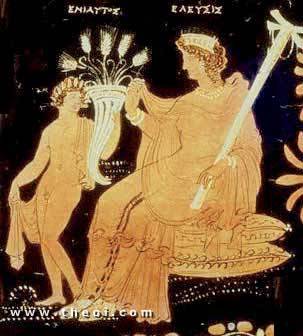
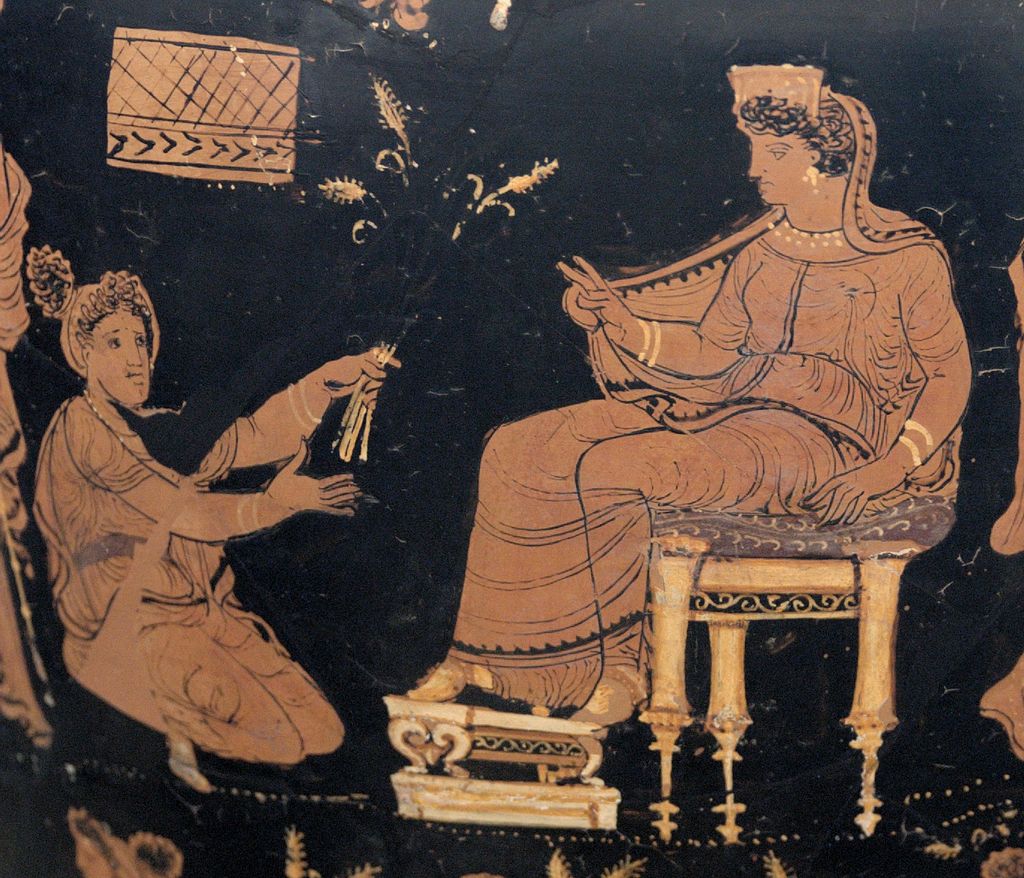
Didrachme from Paros island, struck at the Cyclades and representing Demeter
Symbols: Sickle, Torch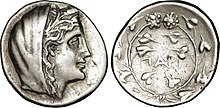
Animals: Snake
Stones: Emerald
Trees & Plants: Ear, Barley. Secondary: Willow, Corn, Rodia, haricot, Vlichouni, Poppy.
| Abode | Mount Olympus |
|---|---|
| Symbol | Cornucopia, Wheat, Torch,Bread |
| Consort | Iasion, Zeus, Oceanus,Karmanor, Poseidon andTriptolemus |
| Parents | Cronus and Rhea |
| Siblings | Hestia, Hera, Hades,Poseidon, Zeus, Chiron |
| Children | Persephone, Despoina,Arion, Plutus,Philomelus,Eubuleus,Chrysothemisand Amphitheus I |
| Roman equivalent | Ceres |
| Festivals | Thesmophoria |
Demeter. Roman copy of Greek original fom: 420 f.Kr.
Symbols: Sickle, Torch
Animals: Snake
Stones: Emerald
Trees & Plants: Ear, Barley. Secondary: Willow, Corn, Rodia, haricot, Vlichouni, Poppy.

Ερμής – Hermes
Symbols: caduceus, winged sandals
Animals: Goat
Metals: Mercury
Trees & Plants: Almond, Spruce. Secondary:’nithos, Phoenix, Hazel, Clove, Cinnamon, Mulberry.
 Hermes Hermes with his mother Maia. Detail of the side B of an Attic red-figure belly-amphora, c. 500 BC.
Hermes Hermes with his mother Maia. Detail of the side B of an Attic red-figure belly-amphora, c. 500 BC.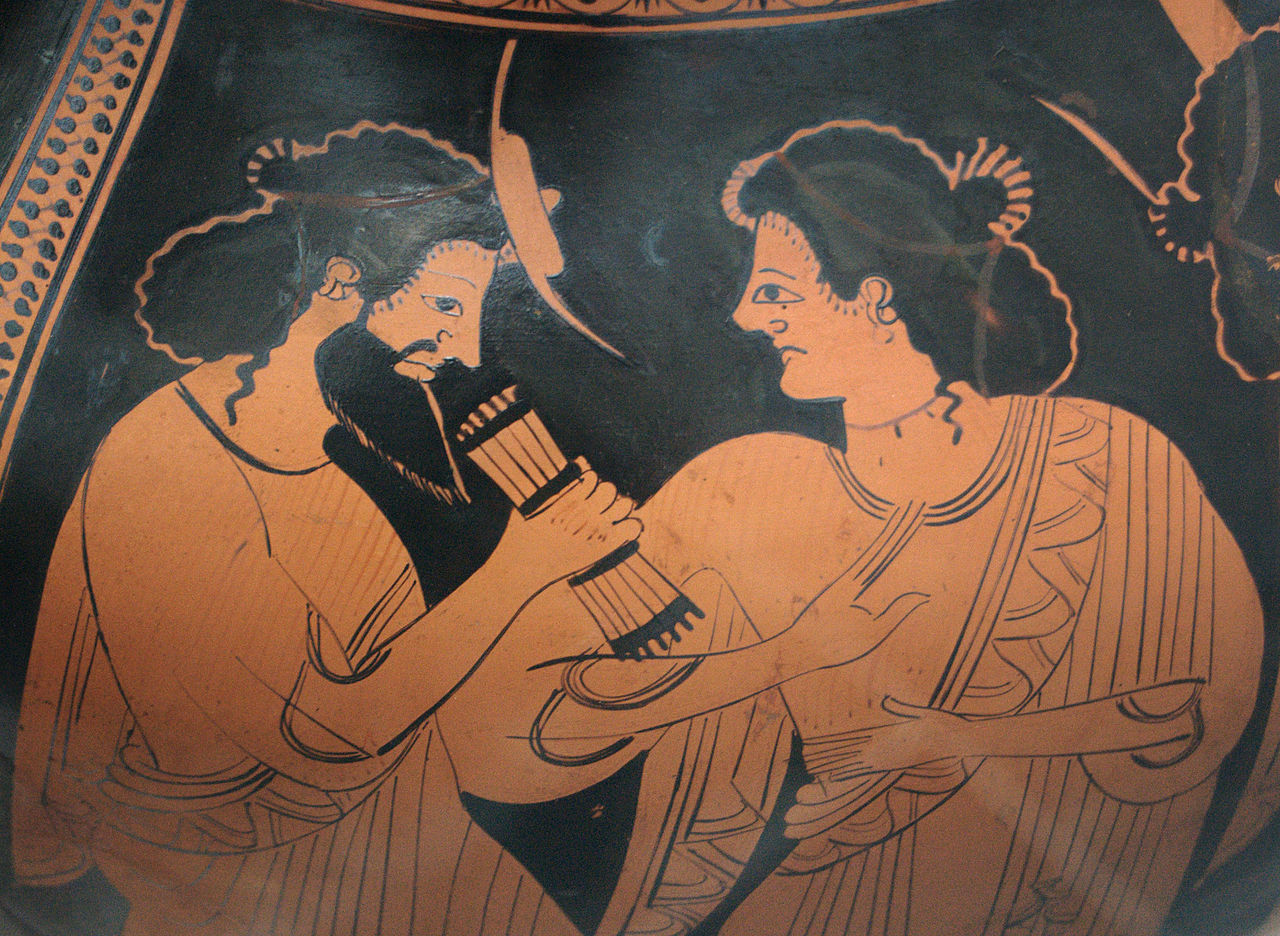
Ήφαιστος – Hephaestus
Symbols: Hammer & Anvil, ax, Fire
Trees & Plants: Margarita. Stones: Emerald, Lazouri, Pearl
Trees & Plants: Rose, Lily, Anemone, Milia, Myrtle. Secondary: Aloe, fern, heather, benzoin, myrrh, Quince, Sandalwood, Angelica, Pear, Astir, Afroxylia (elder), Violet.

Aris – (Mars)
Symbols: Spear & Sword
Animals: Dog, Orne
Stones: Onyx, Sardonyx
Trees & Plants: mint, rue, linden, verbena, Adelochorto.
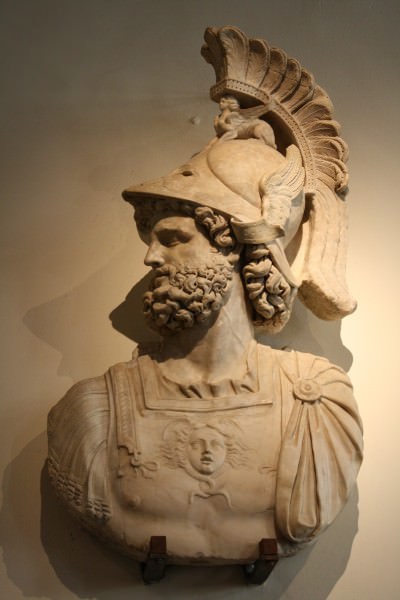
Hephaestus 
Symbols: Hammer & Anvil, ax, Fire
Trees & Plants: Margarita.
Pan 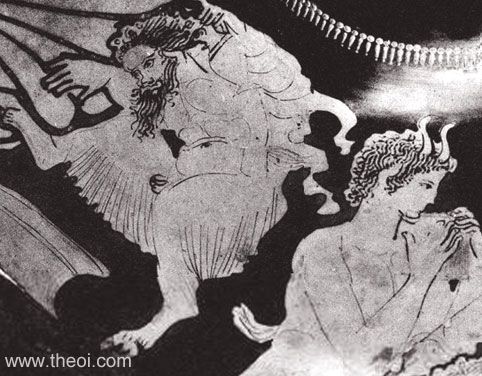
Symbols: Flute, Phallus
Animals: Goat, Ram, stag, Taurus
Trees & Plants: Pine, Spruce,’mpelos. Secondary: Vanilla, Reed, Daffodil, Orchid, chin, Silenus, Savory, Fern, Wild Flowers.
Dionysos
Symbols: Thyrsos, Phallus
Animals: Snake
Stones: Amethyst
Trees & Plants: Ivy,‘mpelos. Secondary: Aesculapius, Sikia, tinder, Fennel, Tamarix, Mushroom.
Dionysus riding the Panthers. Floor mosaic.
October 120-80 dd. to n.э. Delos House
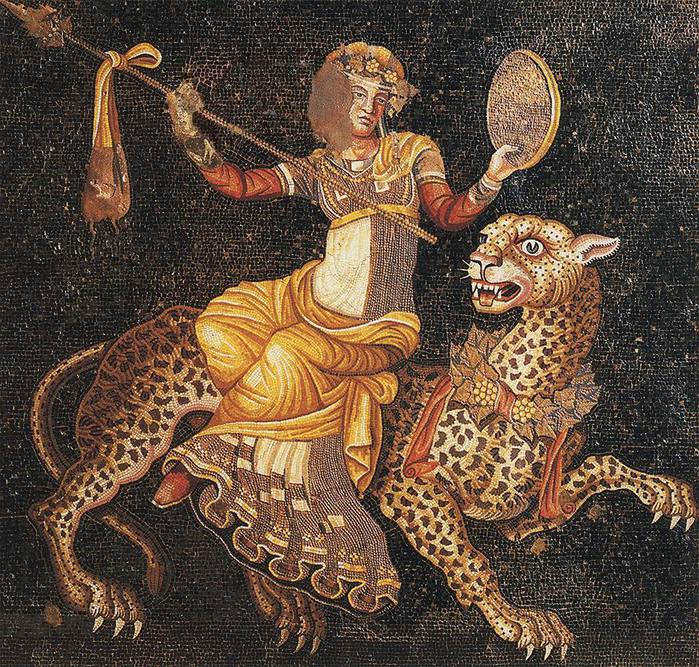
Hecate
Symbols: Manual
Animals: Snake, Dog (usually black)
Stones: Amethyst, Selinolithos, Pearl
Trees & Plants: Lavender, Myrrh, Willow. Secondary: aconite, cyclamen, Garlic, Mint, Mandrake, belladonna.
HEKATE (or Hecate) was the goddess of magic, witchcraft, the night, moon, ghosts and necromancy. She was the only child of the Titanes Perses and Asteria from whom she received her power over heaven, earth, and sea.
Hekate assisted Demeter in her search for Persephone, guiding her through the night with flaming torches. After the mother-daughter reunion became she Persephone’s minister and companion in Haides.Two metamorphosis myths describe the origins of her animal familiars: the black she-dog and the polecat (a mustelid house pet kept to hunt vermin). The bitch was originally the Trojan Queen Hekabe, who leapt into the sea after the fall of Troy and was transformed by the goddess into her familiar. The polecat was originally the witch Gale who was transformed into the beast to punish her for her incontinence. Other say it was Galinthias, the nurse of Alkmene, transformed by the angry Eileithyia, but received by Hekate as her animal.Hekate was usually depicted in Greek vase painting as a woman holding twin torches. Sometimes she was dressed in a knee-length maiden’s skirt and hunting boots, much like Artemis. In statuary Hekate was often depicted in triple form as a goddess of crossroads.Hekate was identified with a number of other goddesses, including Artemis and Selene (Moon), the Arkadian Despoine, the sea-goddess Krataeis, the goddess of the Taurian Khersonese (of Skythia), the Kolkhian Perseis, and Argive Iphigeneia, the Thracian goddesses Bendis and Kotys, Euboian Maira (the dog-star), Eleusinian Daeira and the Boiotian Nymphe Herkyna.
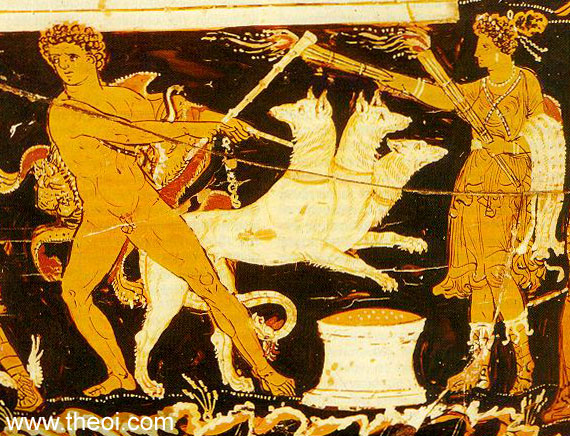
EROS – (Cupid)
Stones: Opal
Trees & Plants: Rose red, white violet, Cane.
Prometheus – (/prəˈmiːθiːəs/ prə-mee-thee-əs;Greek:Προμηθεύς[promɛːtʰeús], meaning “forethought”) is aTitan in Greek mythology, best known as the benefactor who brought fire to mankind. Prometheussided with Zeus and the ascendingOlympian gods in the vast cosmological struggle againstCronus(Kronos) and the other Titans. Prometheus was therefore on the conquering side of the cataclysmic war of the Greek gods, theTitanomachy, where Zeusand the Olympian gods ultimately defeated Cronusand the other Titans.
Prometheus symbolizes the strong man who towered over the fate of the mortal, who touched the divine in man and open the road to sovereignty over the hostile environment.
The body of the fire was really ensarkotis all knowledge. Here formed the archetype of Prometheus. Prometheus is the wise who won the knowledge and pass it to humans. Culture came from the thought that the wise.
The tragedy of the hero makes the model of the tragic human or political person and in it the expression gained worldwide fame. Prometheus was a god and unlike all the other demigods were begotten. He ascended to Olympus with his strength and his mind.
Prometheus also symbolizes the ingenuity and foresight. It symbolizes the spirit of independence toward power (DIAS). Displays the strength of mind and will.
But the works of tragic poets Aeschylus and especially the myth gets another dimension. For Aeschylus in his work “Prometheus Bound” Prometheus gave gifts – knowledge – people to help them avoid extinction (30-34, 108-109). Faded from mortal fear of death (261-262) gave fire to mankind (264), arts (266) and gave them the mind and thought, origin of culture and all the arts (architecture, Arithmetic, Georgia, Navigation, Medical, Divination, Metallurgy etc).
Aeschylus in his work expresses the ideal of the citizen, who alone decided and acted, he knew to be erected in front of the fate and beats with its rationale. And this logic he wants to express in the theater. Prometheus will become a symbol of the tragic and civil man, the man who created culture. He is the hero who rose up with power, with his will and deceit against the gods. The gods punish him, but Prometheus unyielding continues to resist. And in the end beats and redeemed.
It is the struggle of the citizens of Athens who defeated the formidable power of Persia.
In Aeschylus Prometheus is son of Themis, ie. The Law and the Law. Through this struggle Jupiter – Prometheus reflects the struggle of Athens against tyranny (Pisistratus) creator of the classic culture that opposes against every irrational power and eventually impose logic.
In the stories of Prometheus many go beyond. For them, Prometheus was not only his great friend and benefactor of mankind, but also the creator of.
And not only because he was the father of Deucalion – the first mortal king on earth who became the ancestor of the Greeks and all people – but because he had fashioned with his own hands (Lucian – Prometheus). Prometheus cooperation of Athena, had fashioned humans from clay and fire and had given them form similar to the form that had the gods.
Uranus 
Trees & Plants: linden
Gaia 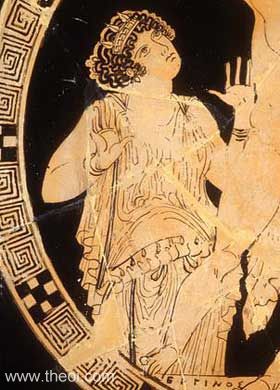
Stones: Amber (Electro), Coral
Trees & Plants: Orange, Apple Tree
KRONOS – (Saturn) 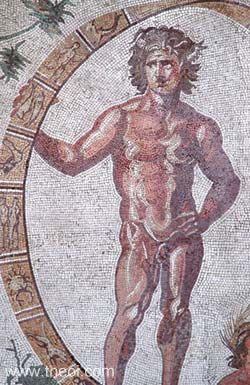
Trees & Plants: Barley, Orchid. Secondary: Corn, Lavender, Pomegranate, Raspberry.
Rea 
Trees & Plants: Myrrh
Persephone

Trees & Plants: Rodia, Poppy.
Adonis 
Trees & Plants: Myrrh, Rose, Lettuce, Fennel, heather
Asclepius 
Animals: Snake
Trees & Plants: Daphne, Mustard.
Iris
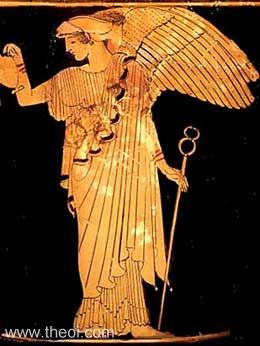
Trees & Plants: Lily
The library has a length of 23 meters and a depth of 17
meters. Inside many appropriately designed and protected
recesses kept in rolls twelve thousand scrolls. The facade of
the library, which is richly decorated, was two floors,
indoor location where papyri three storeys. At the
entrance there the diplokiones are Corinthian Style

Helios – Sun Phaethon (or Aelios or “Helios”) & the chariot of the sun, Athenian
red-figure krater C5th B.C., British Museum, London 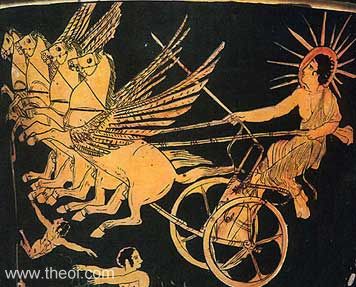
Trees & Plants: Sunflower.
Springtide
Trees & Plants: Cedar
Hypnos – Sleep
 Death and Sleep carrying the dead body of Sarpedon. Performance by erythromofro(=Red shaped) goblet early 5th century. BC, British Museum, London
Death and Sleep carrying the dead body of Sarpedon. Performance by erythromofro(=Red shaped) goblet early 5th century. BC, British Museum, London
Trees & Plants: Poppy
Macedonia comes from the word Makednos,
also Makedon or Macedon (Greek: Μάκεδνος Μακεδών Makedōn or poetic Μακηδών Makēdōn), was, according to *Hesiod’s Eoiae or Catalogue of Women on the origin of the Greeks, the son of Thyia and Zeus, brother of Thessalian Magnes and cousin of Boeotian or Epirotan Graecus. His mother Thyia was the daughter of the Greek progenitorsDeucalion and Pyrrha and sister of Hellen, who together with his three sons Dorus, Xuthus (with his sons Ion and Achaeus) and Aeolos, comprised the set of the basic 7 ancient tribes that formed the Hellenic nation. The above genealogy is also quoted by the Macedonian historian Marsyas of Pella.
Makednos or Makedon, meaning “tall” or “highlander”, was the tribal name of the ancient Macedonians.
The route of the Argeads fromArgos,PeloponnesetoMacedonia
The enormous peristyle, which formed four great porticoes around the courtyard, consisted of 60Doric columns. In the round chamber which Heuzey named the ‘tholos’ to the east of the propylon, a dedicatory was found. The 5 rooms on the south side had mosaic floors, one of which – executed in pebbles – survives in excellent condition. You can see one the Greek key pattern surrounding the mosaic floor. Finally, the most important archaeological found that combine Greek key/meander and vergina sun/star is the Ivory Shield that was found in pieces in Philip´s tomb at Vergina archaeological site. The arduous process of restoration took several years – it is indeed a unique masterpiece of the 4th century B.C. You can see clearly these pan–Hellenic symbols in the picture at the beginning of the article.References 1- Times of Remedies and Moon Phases by C. M. Boger, page 1322- Sally Hutchison Ceely-Geometric Style in Art, Wisconsin Academy oj Sciences, Arts and Leiters,Vol. 71, Part 2, 1983, page 3 3- .The Way of the Labyrinth by Helen Curry, pages 21-23 5- “Vergina Sun” or the “Rays of the Sun God” ?
“Hellenism, the historical course of 4000 years, created huge multinational empires (multinationals, but never multicultural, as stated by the great Greek Byzantinist Helen Glykatzi-Ahrweiler), vast kingdoms, had trade relations with dozens of peoples and countries, but often suffered barbarian invasions and peoples conquered wholly or partly by foreign armies and displaced parts of the eternal Greek territories.
The result of all these historical developments, during the Byzantine time some Greek populations to speak differnt other languages, as some Asia Minor (Turkish-speaking Greeks) to speak Latin, (Vlach-speaking Greeks), to speak slavic (Slav-speaking Greeks) to speak Albanic(arvanitofonoi Greeks), or italian (the Grekanoi of Magna Grecia in southern Italy).
The Persians referred to the Macedonians as “Yaunã Takabara” (“Greeks with hats that look like shields”).

Therefore, the fact that some segments of the population of Macedonia had formerly the sole language of a body slavogenes idiom, not a capable and sufficient criterion for the attempted in the past and attempted today by foreign centers placing them outside the Greek nation … “
 |
|
| Languages | |
|---|---|
| Ancient Macedonian, then Attic Greek, and later Koine Greek |
|
| Religion | |
| Greek Polytheism |
Ancient Dion was a centre of the worship of Zeus and the most important spiritual sanctuary of the Ancient Macedonians.
http://ancient-medieval-macedonian-history.blogspot.com/2008/12/vergina-sun-or-rays-of-sun-god.html]6- Vergina Sun, a Pan-Hellenic Symbol [http://ancient-medieval-macedonian-history.blogspot.com/2008/07/vergina-suna-pan-hellenic-symbol.html] 7- Macedonia,
http://ancient-medieval-macedonian-history.blogspot.com/ info@macedonian.com.auAustralian Macedonian Advisory Council
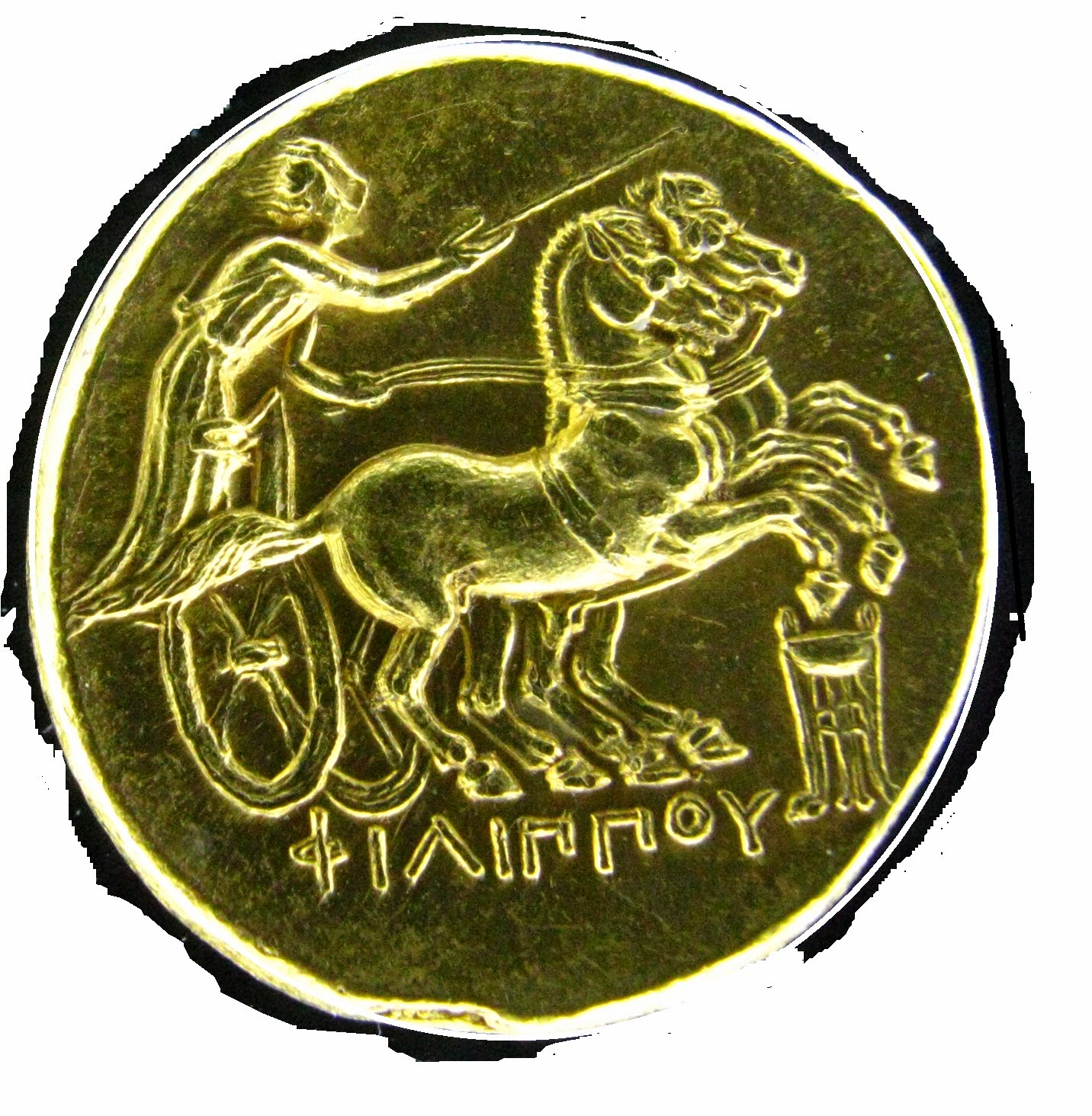
The Vergina Sun – OLD PANHELLENIC Symbol – has been proposed as a symbol of ancient Macedonia or of the Argead dynasty by archeologists.
http://www.ruclip.com/video/YmOlYXyH2kQ/the-ancient-macedonian-coins-the-greek-letters-and-the-lies.html
AMAC’s (Australian Macedonian Advisory Council) role is to promote the truth concerning the Macedonian issue in Australian and international fora
PHOENICIAN “ALPHABET”: AN HISTORICAL DECEPTION
Overwhelming evidence that one of the most important discoveries in the history of civilization is Greek ,a deception that usurps and distorts Greek History and Civilization. It is of utmost importance that the truth be restored not only for modern Greece, but also for thewhole of humanity.The deception that alphabetical script was discovered by the Phoenicians is a long-lived one.For the past 14 years [the Greek scholarly magazine] Davlos has published numerous articleson this problem. This prompted K. Katis to ask that we submit a relevant article for hismainstream daily so that this important issue would become known to a wider audience.
This article summarizes the strong evidence against the “Phoenician Deception,” and proves that the greatest discovery in the history of civilization is Greek. We believe it necessary to republish this article in [this issue of] Davlos exactly as it appeared in the daily.
A SCIENTIFIC MONSTROSITY.
According to linguistic theory, an “alphabet” is defined as “the sum of symbols following a specific sequence and order used to ascribe the essential utterances of a language, under thecondition that each utterance represents only one symbol and vice-versa”. Consequently, in alphabetical script (as an example, in the writings of the people of Europe, America,Australian, as well as the other parts of the world) each letter represents one essential sound.This is not true for the imperfect alphabets expressed through syllables where each symbolrepresents a syllable (with two or more voiced sounds). For example, in Greek Linear A andB, there is a symbol that represents the syllable ko (k + o), a symbol that represents the syllable po (p + o), etc. In Phoenician writing (which has only consonants and no vowels), this situation is even worse, as far as we can tell from the small amount of existing samples.
In Phoenician, each symbol is not equivalent to one specific syllable, but to a variety of syllables, and thus the reader can use his imagination when attempting to decipher the sounds. For example, there are consonants which can be read as either ba, bou, be, bi, bo, etc. Others is not an alphabet, it is a less advanced form of writingthat can be read as gou, ga, ge, go, and so on. Consequently, Phoenician script does not constitute an alphabet, and is not even an advanced form of syllabic script nearing the perfection of the equivalent Greek syllabic writings. It is truly amazing to think that, in the academic world of the past 150 years, the almost contradictory term of “Phoenician alphabet” has been established, which, in reality refers to a type of writing that has nothing to do with an alphabet. It is even more unbelievable to think that the scientific dogma that Greek came from Phoenician has been enforced. Not only the Phoenician is not an alphabet, it is a less advanced form of writing than Greek Linear A and B.
So, professor G. Babiniotis’ statement that “Phoenician writing is something like a syllabic alphabet” must be rejected and replaced with the correct characterization of Phoenician as a “purely concise syllable system of writing,” as stated by the former president of the Greek Society of Philologists, Pan. Georgountzos (see “The Alphabet: A Greek Discovery”
House in Ancient Greece
– The hall (Mastihari Kos)

House in Ancient Greece – The room of the men, the “andron”(Mastihari Kos)



GREEKNESS OF THE ALPHABET
a) Archaeological Evidence The theory that the alphabet is a Phoenician discovery has been maintained through the argument, among other things, that certain symbols of Phoenician writing are similar to the letters of the alphabet. For example, the Phoenician alef is the reverse or sideways Greek “A.” This argument was a strong one until about 100 years ago, when linguists and historians still maintained that the Greeks did not know how to write before 800 B. C.! Around 1900 A.D., however, Arthur Evans excavated the Greek Minoan Crete and discovered the Greek Linear writings, whose symbols corresponded to 17 of the 24 letters of the Greek Alphabet. Given that (A), the most ancient evidence of the Greek scripts (Linear A and Linear B) that were later discovered in Pylos, Mycenae, Menidi and Thebes — but also in more northern areas up to the Danube river as well — were dated to before 1500 B.C. And (B), that the Phoenicians and their writings appear in history no earlier than 1300 BC, Evans was the first person to express doubts about the theory that the Greeks received their script from the Phoenicians. He put forward the scientific suspicion that it was probably the other way round. The doubts pertaining as to who was first — the Phoenicians or the Greeks — in discovering writing, became a certainty when French professor, Paul Fore, an internationally acclaimed specialist on Prehistoric Archaeology, published a report in Nestor (an American Archaeological Journal of the University of Indiana — 16th year, 1989, page 2288). In this report, he submits and deciphers plates with Greek Linear writing found at the cyclopean wall of Pilikates, in Ithaca, dated, through the use of modern scientific methods, back to 2700 B.C., The language of these plates was Greek, and the decoding by professor Fore resulted in the following syllabic text, expressed phonetically: A]RE-DA-TI. DA-MI-U-A-.A-TE-NA-KA-NA-RE (ija)-TE. The phonetic equivalent of this is translated, always according to the professor, as: “Ιδού τι εγώ η Αρεδάτις δίδω εις την ανασσαν, την θεάν Ρέαν: 100 αίγας, 10 πρόβατα, 3 χοίρους” [Here is what I, Aredatis, gives to the queen- goddess Rea, 100 goats, 10 sheep, 3 pigs]. (See, “Davlos” magazine, issue 107, November 1990, page 6103). Thus, Fore proved that the Greeks were writing and speaking Greek at least 1400 years before the appearance of the Phoenicians and their script in history. But, the archaeological excavations in Greece during the last 15 years have given us many more great surprises: The Greeks were writing using not only Linear A and B, but also a type of writing identical to that of the alphabet since at least 6000 B.C. In fact, at Dispilio, in the lake of Kastoria, in northern Greece, professor G. Houmouziadis discovered a plate with writing very similar to that of the alphabet, which was dated, using radioactive Carbon- 14 and visual photothermal methodology, back to 5250 B.C. (see Davlos, issue 147). Three years later, N. Samson, a curator of the Prehistoric and Classical Antiquities Department, discovered shards of vases (“ostraka”) with letters identical to the present Greek alphabet while excavating at the “Cyclop’s Cave,” on the deserted island of Yioura, near the inhabited island of Alonnissos, in the Northern Sporades island complex. These vases were dated to5,500 to 6,000 B.C. with the same methods (see “Davlos,” issue 185, May 1997). The same archaeologist, while performing excavations on the island of Milos, discovered vessels of the proto-cycladic period (mid-3rd millennium B.C.) with letters identical to the Greek letters:
“X,” “N,” “M,” “K,” “Ξ” [ksi],”Π” [p], “Ο,” & “Ε.” (See N. Samson’s interview in Davlos,issue 204, December 1998, page 12749.)
It is apparent that these archaeological discoveries have given a “comical’ character to the so-called “Phoenician Theory” on the discovery of writing. In addition, these archaeological discoveries have revolutionized chronological dating of Greek history as it is taught today, as well as the world history of civilization itself. (See also the book by Con. Koutrouvelli, “Re- establishing the Chronology of Prehistoric Times based primarily on astronomical information from Ancient Writers,” Davlos Publishing, 1999.)
b) The somewhat mathematical proof
While the house-of-cards which provided “proof”‘ of the so-called “Phoenician alphabet” was being torn down by archaeological discoveries, another overwhelming piece of evidence surfaced. This evidence was offered to us by the 20-year long discreet and timid research of the Greek Language and Writing by a great researcher, Elias Tsatsomoiros. Unfortunately E.Tsatsomoiros passed away on December 19th 1991, after having, however, completed his revolutionary work, History of the Genesis of the Greek Language-from the hunter-gatherer to the time of Zeus-the Deciphering of the Greek Alphabet. The undersigned [writer of this article] had the honor of publishing and editing this work (Davlos Publishing, 1991), but also the honor of having worked closely with the researcher for more than a decade. We had long discussions on the numerous problems arising from the research, and we had published a series of articles in Davlos magazine. This memorable researcher proved in a remarkable way that every letter of the Greek alphabet contained a consistent code meaning, which is literally introduced either exactly or metaphorically within the general meaning of the Greek word it belongs to, as a partial meaning. Consequently, every (ancient) Greek word is basically an acronym (similar to D(imosia) E (picheirisi) H(lektrismou) [=ΔΕΗ in Greek, or as U(nited) N(ations), in English], where every letter provides a significant or less significant notional element, and then, they all together provide the logical definition of the meaning expressed bythe word. The “significant difference” of each word’s meaning is usually provided by the firstletter. Obviously, there is not enough space in this article to present the code meaning of the letters of the Greek alphabet as a whole, as they are analyzed in this revolutionary volume of research in the field of human speech. As an example, I will choose only one of the 24 letters of our alphabet, “Ypsilon” = “Y” or, small case, “u” (pronounced, long-e “eepsilon,” the 20th letter of the Greek alphabet, and familiar to us as “Y” in the so-called “Latin” alphabet– which is nothing more than a variationof the Greek “Chalcidean” alphabet). Ypsilon, therefore, as its shape indicates, has the code meaning of “a cavity” οr, if reversed, of a “convexity.” This meaning is introduced into the words containing this letter, and sometimes, by extension into the meaning of liquids (which, through their natural flow end up filling the “cavity”). I will quickly mention some of the names of vessels and liquids (such as the amphiconical κ-Υ-πελλο which is dated back to 2700 B.C. and is displayed at the Heraklion Museum). One may add to the words mentioned there, many others, such as kot-Y-li, go-Y-ttos, tr-Y-blion, p-Y-xis, amphore-Y-s, b-Y-tion, l-Y-chnos, procho-Y-s, ske-Y-os, etc, all having the meaning of a curvedobject. Also, some other words such as k-Y-hsis (rounding of the stomach ofan eng-Y-os [pregnant] woman); k-Y-ma (curving on the surface of the ocean); cr-Y-pti (curving of the ground); the preposition [h-Y-po] Y-po (meaning under a certain level); h-Y-per (preposition meaning above acertain level); Y-psos =height; and all of the hundreds of words that have h-Y-po or h-Y-per as a prefix, as well as thousands of others. This discovery, which unfortunately has been officially ignored, is a continuation of the forgotten Platonic approach to the problem of language (see Plato’sCratylus ).
This theory:
1. Completely rejects the theorem that the Greek language came from another language (the so-called“Indo-European”!!!), since it is proven to be the only non-conventional language of the world. In other words, the only language where a relationship betweenthe “word” (as a form) and the “meaning of the word” is established.
2. Consequently, it is proven that Greek is the first and only created language of the human species which provided the basis for all “conventional” languages, as are all the other languages of the world (where there is no causative relationship between the form and the meaning). These other languages are a corrupt form of Greek.
3. This theory proves, without a doubt, that the alphabet was created by the Greeks so that the 24 or 27 code letters would aid in attributing the meanings of the Greek words (and only of these).
4. Comparatively, this theory shows that the symbols of the Phoenician writings andtheir nouns, e.g., “alef” =ox, “beth” = hut, “gimel = camel, etc., not only do not containcoded meaning, but are also associated or refer to [the] primitive animal conditions[one would expect in a culturally backward society].
THE HERODOTUS EXTRACT
All the Greek writers who mention the alphabet (they called it “grammata”) consider it a very ancient Greek invention (by Prometheus, Palamedes, Linus, etc). The theory of the Phoenician alphabet was always, and is still, based on an exception to this general rule. Thisexception is an excerpt from Herodotus, that he himself presents as his ‘personal opinion’ (“ως εμοι δοκεει” = “as it seems to me”). This opinion was formed based on the sayings of others, as he himself mentions in the previous paragraphs (“αναπυνθανομενος” = taking information from others). Let us have a look at the Herodotus’ excerpt (History, E 58): [58. As far as the Phoenicians, they, who arrived with Cadmus, including the Gefiraioi, had lived in many other places and introduced also arts (new and unknown) to the Greeks; in fact, and also (some) writing, whichhad not been known to the Greeks before that, as I think, first this writing which was used by all the Phoenicians. With the passing of time, however, the Phoenicians changed this type of writing along with their language.]
The most important thing about this excerpt is that in the critical phrase “… ama tin foni metevallon kai ton rhithmon ton grammaton,” it is disclosed that the Phoenicians-Gefiraioi that went to Viotia with Cadmus brought some form of writing with them. But, as the Phoenicians “changed their language” (they learned Greek, in other words), they also changed their writing (they started writing, therefore, with the existing ancient Greek writing that already existed in Viotia). Although this statement was made by Herodotus, the translators, subsequently, provided the translation [meaning] that the local Greek Viotes and not the Phoenician emigrants changed their language and writing and adopted the Phoenician! This generally incoherent reference to the alphabet, as it has been saved, has been obviously altered and meddled with, who knows by whom and when. Let us look at the suspicious continuation of the text, as it has arrived to us:
Around them (the Phoenicians) lived at that place during that year (year of Cadmus) Ionian Greeks, who received through contact or through teachings by the Phoenicians their writings, changing their own writing which they used little. When using this writing and since this writing had been introduced to Greece by Phoenicians, they called it Phoenician.
Ionian Greeks living around the Phoenicians received the Phoenician writing and, using a few of its letters, since they had altered them and since it was just, they called it Phoenician-to pay tribute to the people who brought it to Greece, is a striking contradiction. Consequently, one can assume that this is a forged paragraph, hypothetically explanatory, which aims to reduce the previous statement “…as they changed their language, they changed their writing,” to an unimportant statement. This is how the “Phoenician Theory” was substantiated and is maintained as an obvious forgery.
IN ADDITION
The “Phoenician Theory” was established in Europe during a time, when, as the renowned British classical scholar, S. G. Rembroke (The Legacy of Greece, Oxford University Press, 1984) wrote, “The Phoenicians were given an intermediary role “that is not based on any historical information”. A role, in other words, of the transporter of wisdom and civilization from the “chosen” people of Israel to the “uncivilized” nations, and specifically the Greeks. This, of course, could be forgiven, since this was established around the end of the Medieval Ages, when religious fanaticism and backwardness had reached such a point that the daughter of Agamemnon, Iphigenia, is presented as the daughter of Iephtha; Deukalion is presented as
Noah; Appis is a consul of Joseph; Apollo, Priam, Tiresias, and Orpheus are corrupted personae of Moses; the story of the Argonauts is the crossing of the Israelites from Egypt to Palestine, and other similar distortions. The above are noted by Rembroke.
And we conclude: At the time, Hellenism was in comatose spiritual condition regarding national and historical awareness, and therefore totally unable to defend its history and civilization, and for this reason could not react and did not react. Today, it is with ourtolerance that our language is deemed “Indo-European,” and our writing “Phoenician,” our Athena and our Socrates are presented as “Blacks,” and our civilization as “African.” What spiritual situation are we in now? [i.e., What’s our excuse this time?]
Notes: On page 13745 of this article, is a picture of a piece of shard [pottery] dated to 6,000 B.C., found on the islet of Youra of the North Sporades island complex with Greek alphabetical writings. One can see the letters “A,” “Y,” & “D” [alpha, eepsilon, and delta ], almost identical to the Greek letters of the classical alphabets. This finding proves that the Greek alphabet is older than the Greek Linear writings. This finding also completely and definitely disproves the false theory that the Greeks got their alphabet from the Phoenicians, who made their historical appearance around 1300 B.C., in other words about 4,500 to 5,000 years after the creation of this plaque at Youra. On page 13747 are shown letter-symbols from the Proto-cycladic vessels of Milos (mid-third millennium B.C.). One can distinguish the [letter] “X” [chi] to the left and the [letter] “N” to the right. These letters are written just as the letters of the Greek alphabet are written today.
Sun of Vergina – A Greek symbol
Το Αστέρι της Βεργίνας – Ένα Πανελλήνιο Σύμβολο
The Sun of Vergina is a symbol that was widely used by Ancient Greeks. It became famous due to the Macedonians who were using it as Symbol of the Argead Dynasty.
-The Royal house of Macedon:
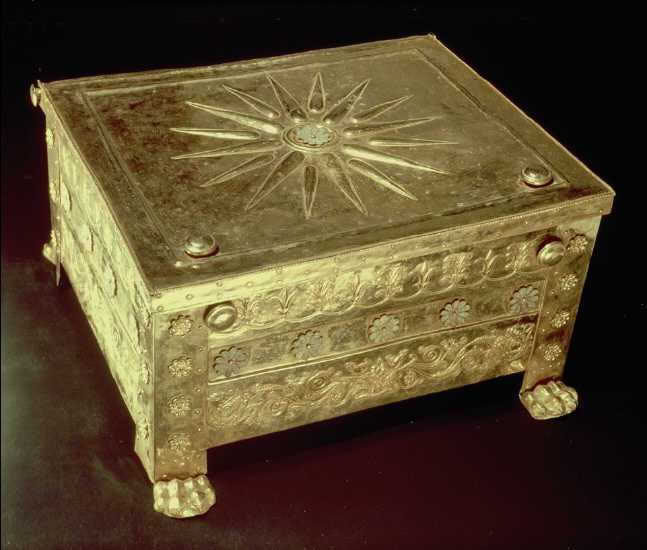
The typical Sun of Vergina is a 16-pointed Sun. It can also be found in other styles: 12-pointed or 8-pointed. What was the meaning of this symbol?? –In the typical 16-pointed Sun , the 4 rays represent the 4 elements: Earth-Ocean-Fire-Air. The other 12 rays represent the 12 Gods of Olympus.You can see the explanation in the following animation :

–In every form, the Sun of Vergina symbolized Virginity:
Goddess Athena was a Virgin, so this Sun was associated with her. We can also find this symbol associated with Apollo. –All the versions (16,12 and 8-pointed Sun) are associated with another famous Greek symbol, the “Delphian Epsilon”, symbol of Apollo: 
The Sun of Vergina became common art design in coins, craters, wall-drawings etc LONG BEFORE the Macedonian royal house (the Argead Dynasty) used it. After the unification of the Greek (Hellenic) nation under the leadership of Alexander the Great, the Sun of Vergina became the symbol of the Hellenic Ethnogenesis.
In the following replies, you will be able to see some pieces of Ancient Greek art containing the Sun of Vergina, BEFORE THE RISE OF THE GREEK KINGDOM OF MACEDONIA. These sun symbols are found in various Greek places, apart from Macedonia. Moreover, there will be a small historical flashback, in order to see the evolution of this symbol throught the ages :
2000 BC:
This is the time where ancient Greeks first started using the Sun symbol. It was not standardized yet, it was a early form of the Sun of Vergina:

780BC:
The Sun of Vergina has been standardized. The following art work shows the destruction of Troy. We can clearly see the Sun symbol in the warrior’s hump. It was found in Mykonos island :

The following images are just a small sample, showing the wide usage of the Sun of Vergina in Greek Art:
Spartan Hoplite – 780 BC:

Spartan Amphoreus –
This vase can now be found in the Louvre Museum, Paris. 6th Century BC:

Exekias was a famous vase-painter and potter of ancient Athens. The scene on this page, from an amphora of the third quarter of the 6th century BC (now at the National Museum of Athens), is one of his most famous works. It is considered one of the finest surviving examples of ‘Black Figure’ vase painting.

Achilles and Ajax, two major Greek heroes of Homer’s Iliad are depicted here relaxing over a game of dice during a lull in the fighting. Achilles has just won; he has just thrown a ‘four’ while Ajax has to accept a ‘three’:
Third Quarter of the 6th century BC:

The cloaks of both these Homeric figures are studded with numerous 8-ray Sunbursts.
The return of Hephestus– 560 BC:
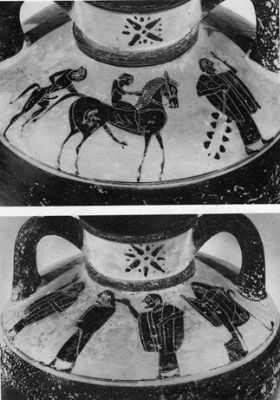
Athena and Hermes– 540 BC


Heracles and Lernaia Hydra- 525 BC:

Odyseus blinds the Cyclop, Magna Grecia- 520 BC:

Greek Amphoreus, Magna Grecia– 500 BC

Heracles- Olympia- 500 BC:

Goddess Athena– 5th century BC:

Hades-the Greek underworld– 5th century BC:

An Athenian citizen-soldier of about 450 BC. He is wearing a linen cuirass (body armour), a style which had largely replaced cuirasses made of bronze by about the middle of the 6th century BC:

The shoulder pieces of his cuirass are decorated with 8-ray Sunbursts. The grotesque face of the Gorgon Medusa, a very common Greek symbol and one of the attributes of the goddess Athena, hangs on his chest.
Heracles and Athena, 480 BC:

Another Attic vase (dated c. 480 BC), shows a warrior wearing an ΅Attic’ helmet and carrying a large, decorated shield. A sixteen-ray sunburst adorns the shoulder piece that is visible:
– c. 480 BC:


Inside the temple of Nemesis in Thamnous– 436 BC:

Ancient Greek hoplites, Museum of Napoli, 400 BC:

The Legent of godess Dimitra-400BC:

Canos Vase –400 BC:

400 BC:

Greek Hoplite vs Persian Soldier, 4th century BC:

Greek Hoplite vs Persian Soldier, 4th century BC:

The Greek hero Perseus:
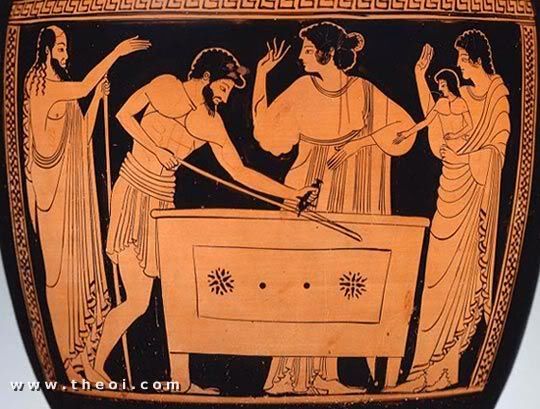
Fourth century BC

Three youths in battles one of whom carries a shield emblazoned with the Sunburst:

An epaulette depicting a sunburst.

At least two of the hoplites competing in the armed foot-race from a Greek amphora of the 4th century BC (below), carry shields featuring a solar episema. Athletic contests were held in honour of the gods at Greek festivals. The armed foot-race was a very popular event, so much so, that 25 shields were on hand at Olympia for the use of the contestants. A Panathenaic amphora by Nikomachos from the same period (not shown) likewise depicts three nude warriors racing, two of whom carry shields emblazoned with Sunbursts.

Nudity in battle, as depicted on this late classical Athenian wine-jug (below), was an artistic convention designed to distinguish Greek from barbarian. Greek warriors never actually fought without body armour; nor did they hunt in this way as the famous painting by Gnosis of Alexander hunting would have us believe. A Greek hoplite is here engaged in battle against three Persians (not all of whom are visible). This scene reflects the growing confidence felt by Greeks in the wake of their defeat of Persia in the early 5th century and XenophonΆs successful Persian venture in the early 4th century BC. The Greek hoplite proudly carries a shield adorned with the evidently quite common Sunburst episema:

An Attic red figure krater now in the Antikenmuseum (in Basle, Switzerland; not shown) depicts a scene from the Amazonomachy, the mythical battle between Theseus and his Athenians against the invading Amazons. Significantly, one of the Athenian warriors engaged in the melee, who is also fighting in ?heroic nudity?, holds a shield with a 16-ray Sunburst. The ‘Polygnotos’ stamnos (445-430 BC; below) dealing with the same theme, shows Theseus himself carrying a shield decorated with a Sunburst. [A combat scene from an amphora painted by the so-called Suessula Painter (c. 400 BC; not shown) likewise depicts a Greek soldier carrying a shield decorated with a somewhat faded yet still discernible Sunburst].

An early krater from Magna Graecia from the last quarter of the fifth century BC painted by the so-called Sisyphus Painter incorporates a number of different scenes. Horse riders are apparently engaged in a race in the top-most scene. Women are shown playing musical instruments in the middle, while the bottom scene has the legendary battle between the Centaurs and the Lapiths as its theme. One of the Lapith warriors is carrying a large shield with a distinct 16-ray Sunburst episema:

The bust of Xanthippus, who led the Athenians to victory over the Persians at Mycale (479 BC), reveals that the brow-piece of his helmet was adorned with a 16-ray Sunburst.
Xanthippus was the father of Pericles, the great Athenian statesman of the ‘Golden Age’ of Athens:

This reproduction of a scene from a 4th century BC vase found at Ruvo, presents the familiar tale of Jason and the Golden Fleece. Jason is about to spear the dragon guarding the prized fleece. Herakles makes an appearance and swings his trademark club while Medea stands nearby and is in the process of lulling the dragon to sleep with her sorcery. One of JasonΆs companions (bottom right ) carries a shield with an 8-ray Sunburst:
This mixing bowl by the so-called Nazzano painter (c. 400 BC), depicts a scene from the sack of Troy by the Greeks. Neoptolemos is shown brandishing the child Astyanax by the leg (centre of scene) while Aphrodite intercedes to protect Helen from the wrath of her husband Menelaos, king of Sparta (bottom left of scene). The helmets of both Neoptolemos and Menelaos are adorned, like that of Xanthippus, with Sunbursts. The Trojan king Priam lies on the ground (bottom right) at the feet of a Greek soldier who is raising his sword threateningly at him. The soldier’s shield, once again, displays the familiar shape of the Sunburst:

A sixty-four ray variant of the Sunburst appears on a shield of a Greek soldier engaged in combat against a Persian cavalryman (below). The scene is from an Attic red-figure vase.

It is evident that the Sunburst was indeed a common Greek episema. As Greeks, the ancient Macedonians were later to adopt this emblem onto the shields of the Macedonian army and, with AlexanderΆs conquests, take it to the edge of the known world.
In the Temples of Attica From the late 17th century AD, and in particular the 18th century, classical Greek civilization began to attract the ever-growing interest, curiosity and imagination of western Europeans. One manifestation of this was the numerous “journeys of discovery” undertaken by various scholars to the soil of “rediscovered Hellas” itself, which was then still part of the Ottoman Empire. Two such individuals were the young architects James Stuart and Nicholas Revett, who in 1751 arrived in Attica and immediately set about accurately recording the architectural details of surviving buildings of classical Athens and its surroundings. The four volume “Antiquities of Athens”, published in 1762, is the product of their research. The diagrams on this and the following page are taken from reproductions by Stuart and Revett, and other antiquaries, of solar emblems found in the coffers (sunken ornamental ceiling panels) of various classical Greek temples of Attica.
From the Hephaistion (also known as the Theseion), coffers from the wing of the pronaos of the temple, 449 BC:

Coffers from the Ionian stoa of the Propylaea (entrance to the Acropolis) the Sunburst also appeared in the coffers of the Parthenon itself, 437 BC;:

The emblem as it appears in the coffers of the Temple of Nemesis at Rhamnous, 436 BC:

From the coffers of the Propylaea at Eleusis (2nd century BC), itself a fairly close replica of the Athenian Propylaea on the Acropolis:

The similarity of these Attican solar emblems with the Sunburst of the Macedonian royal dynasty is astonishing to say the least. It is important to remember that most of the Attican emblems recorded by the 18th century antiquaries pre-date ancient Macedonia’s ascendancy by at least a century. It is quite clear, given its appearance on some of the best known temples of classical Greece, that the peculiarity of this symbolic representation of the sun, is indeed a Panhellenic phenomenon.
Goddess Athena figure 4th century BC:

Athenian Hoplite, 4th century BC
: 
Greek hoplite, 4th century BC: 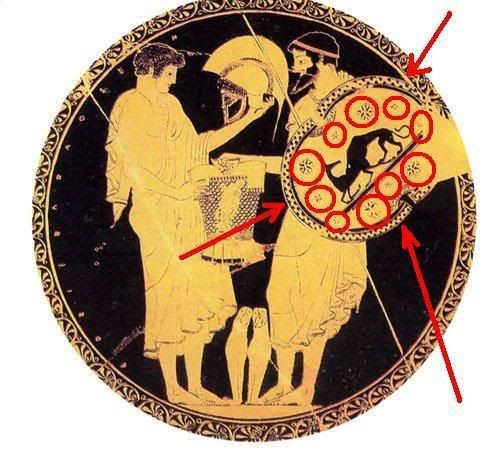

This excellent site gives even more information about this very theme:http://www.300spartanwarriors.com/im…ONTID_CLAN.pdf
Athena and Hercules, 4th centuryBC:
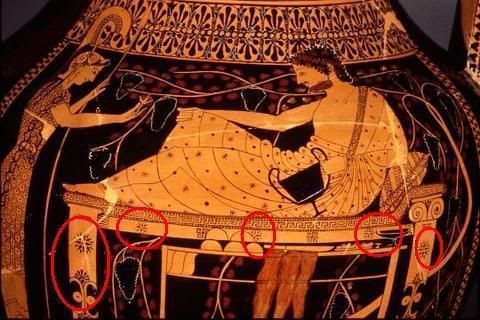
Greek coins: 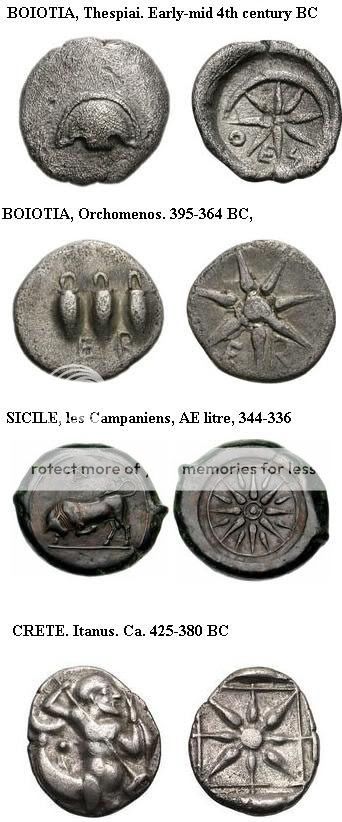 Goddess Athena,4th century BC– Louvre Museum:
Goddess Athena,4th century BC– Louvre Museum: 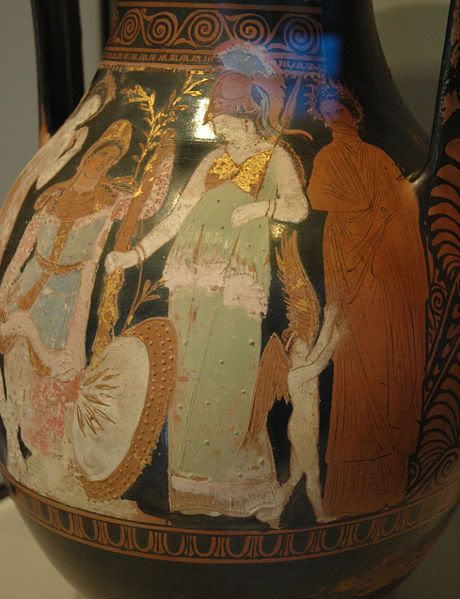
Phrixus and Elli– 4th century BC:

One side of a coin from the Ionian island of Kerkyra has a floral motif arranged as a Sunburst. The word KOPKYPAI(Kerkyra) can be read on the periphery:

Helios, the sun god of the ancient Greeks, was usually represented riding a chariot which was drawn by four, often winged, horses. His chariot rose daily into the heavens from the east and after blazing across the sky plunged into the western sea, thus bringing on the night. The sun’s brilliant light emanated from the fiery crown that adorned HeliosΆs head. The sun god made the fruits of the earth ripen – fertility being a common and obvious symbological association of the sun. When swearing an oath Greeks would often call upon Helios as a witness, as they believed he ‘saw and heard everything’. Although originally distinct deities, Helios was confused, as early as the 5th century BC, with Apollo (originally the god of music, the arts, archery, healing and prophecy – and later of light), so that Apollo frequently took on the function of the sun god himself. The epithets Phoebus ‘the brilliant’, Xanthos ‘the fair’ and Chrysokomes ‘of the golden locks’ used to describe Apollo, point to this solar connection. The liveliest cult of Helios in the ancient Greek world existed on the island of Rhodes. Each year during the Halieia festival which was celebrated with much splendour and with athletic contests, the Rhodians threw a team of four horses into the sea as a sacrifice to him.
In honour of what was effectively their national deity and to commemorate their heroic defence against Demetrius PoliorcetesΆs army, the people of Rhodes commissioned the celebrated sculptor Chares of Lindos to create a huge statue of Helios. This statue, which is known to us as the ‘Colossus of Rhodes’, was one of the wonders of the ancient world. It was completed in 292 BC, 12 years after work began on it. It stood at the entrance of RhodesΆs harbour and was over 35 metres tall. Helios was represented with a crown of sun-rays, a spear in his left hand and a flaming torch held aloft in his right.. Descriptions of this ancient statue inspired the design of FranceΆs gift to the people of the USA in 1884 – the Statue of Liberty – as the inscription at the base of this New York landmark acknowledges. Less than a century after its completion (in 224 BC), an earthquake destroyed the statue and it was never again erected. The metal was finally sold for scrap in 653 AD. The rays emanating from the sun god’s head, as they must have appeared on the Rhodian statue’s crown, and as we know them to actually be depicted on surviving works of art, reinforce the conviction that the inspiration for the Sunburst derives from the traditional representation of the Greek sun god Helios. It is not difficult to see that stylized rays emanating from a fiery core is in fact a shorthand reference to this solar deity rather than to a star. Perhaps the most compelling evidence linking the Sunburst used by the ancient Macedonians (and the ancient Greeks in general) with the sun god is this representation of Helios from the
Temple of Athena
at Troy. The shape of the rays around Helios’s head and the very way they are configured is remarkably similar to the Sunburst and strongly points to a close relationship between the two. Helios(God of Sun)- Temple of Athena , Troy:

Propylaia of Elefsina: 360 BC:

The tradition passed from ancient Greek to Byzantine period. As I have mentioned in my previous posts, Athena was the virgin Godess. When Christianity “arrived” in Greece, Greeks replaced Athena with the Madonna(the mother of Jesus Christ). So , all the temples of Athena became churches of Madonna (including the Parthenon) and all the symbols that had connection with Athena, became Madonna’s symbols. So did the Sun of Vergina: It became the symbol of Madonna! The Byzantine Artists were calling the Sun of Vergina as“Aeiparthenon”, that means “For ever Virgin”. A typical image of Madonna includes 3 Suns of Vergina (Aeiparthena). These 3 suns, as Byzantinologists say, symbolize the fact that Mary remained a virgin before the conception, during the gestation and after the birth of Jesus Christ. The following images show the usage of the Vergina Sun in the Byzantine Empire:
This is the Panagia from the Monastery of Panagia Soumela in the Pontus:
Read more http://history-of-macedonia.com/2008/04/10/sun-of-vergina-a-greek-symbol/




